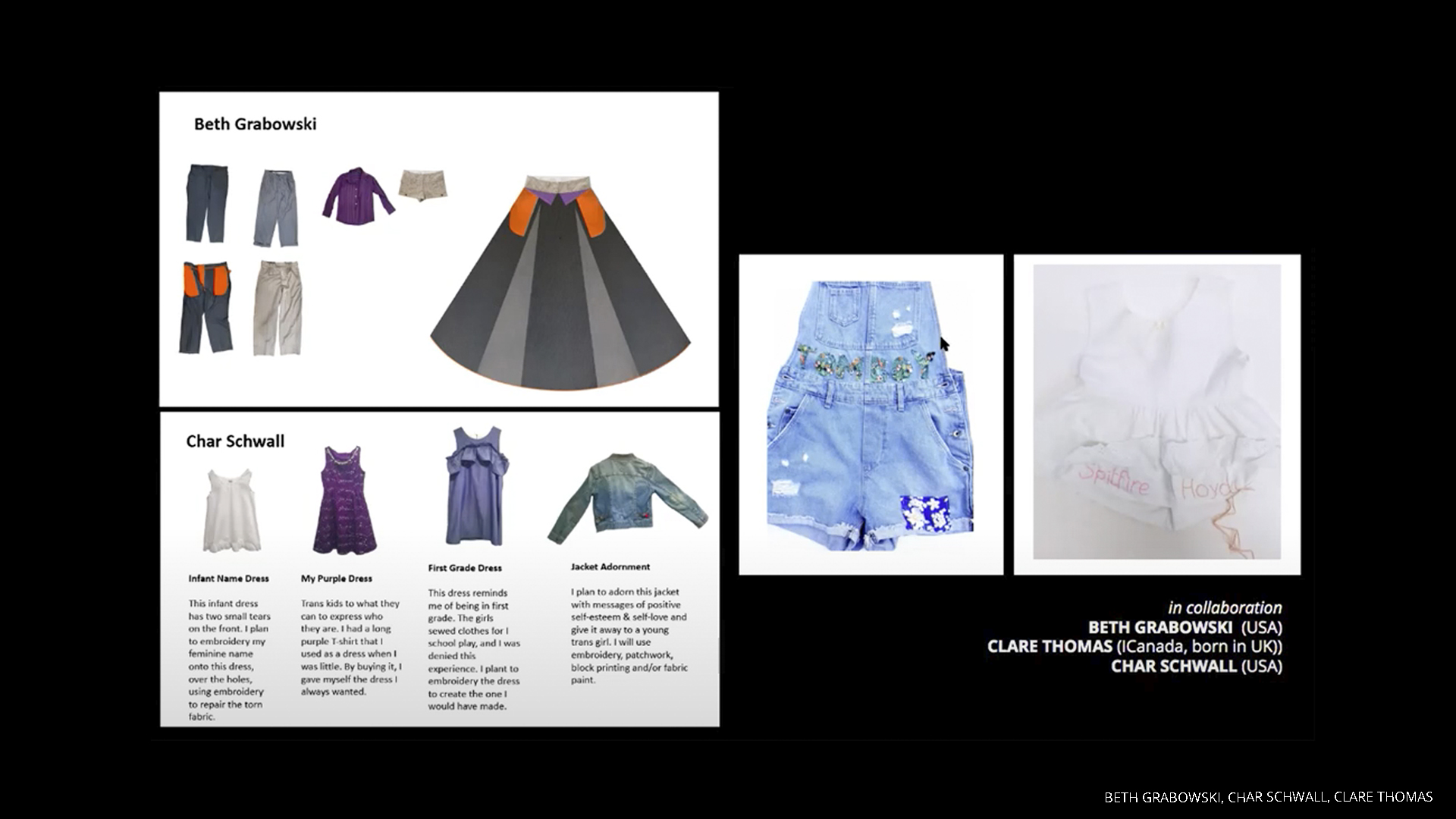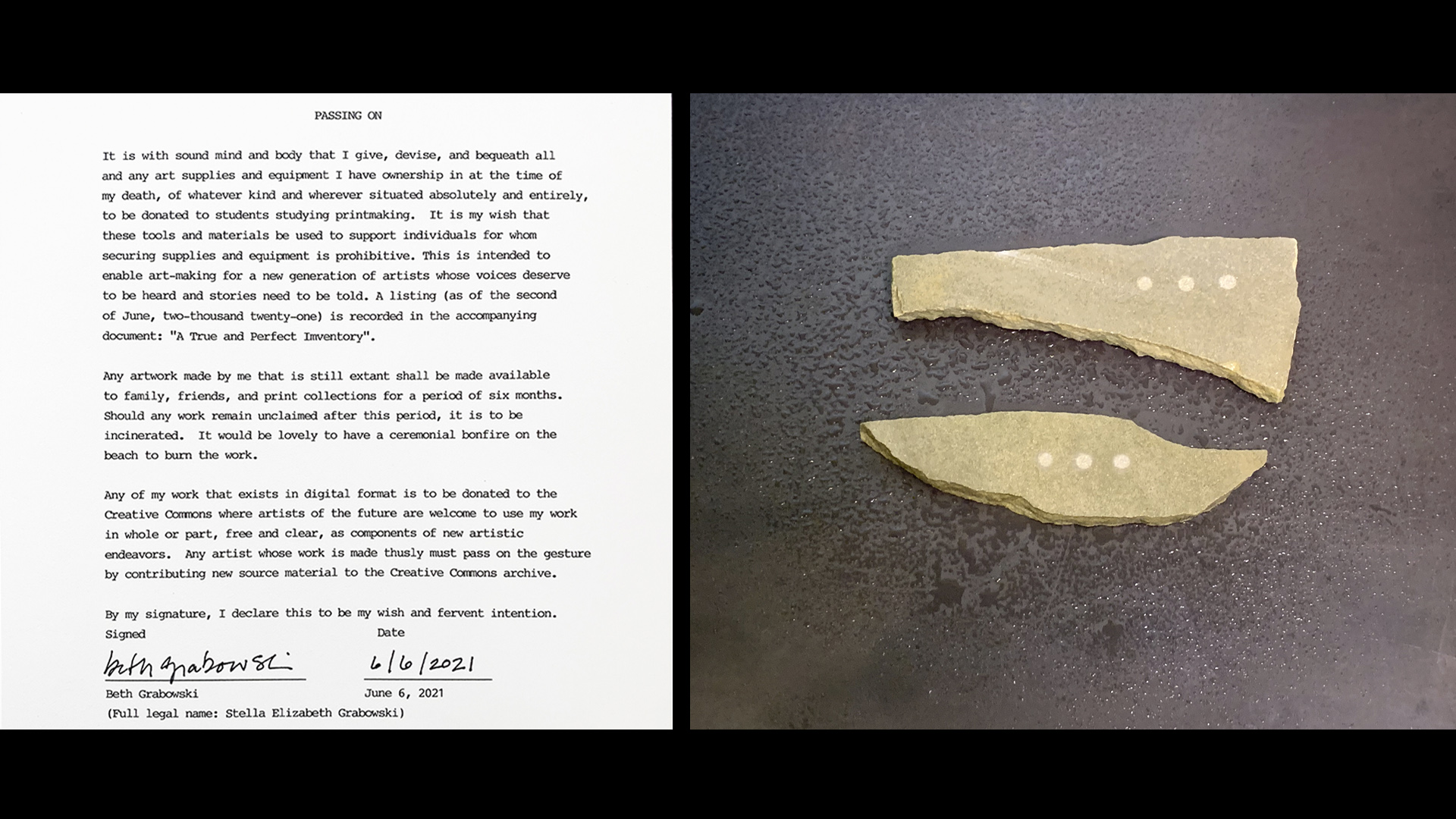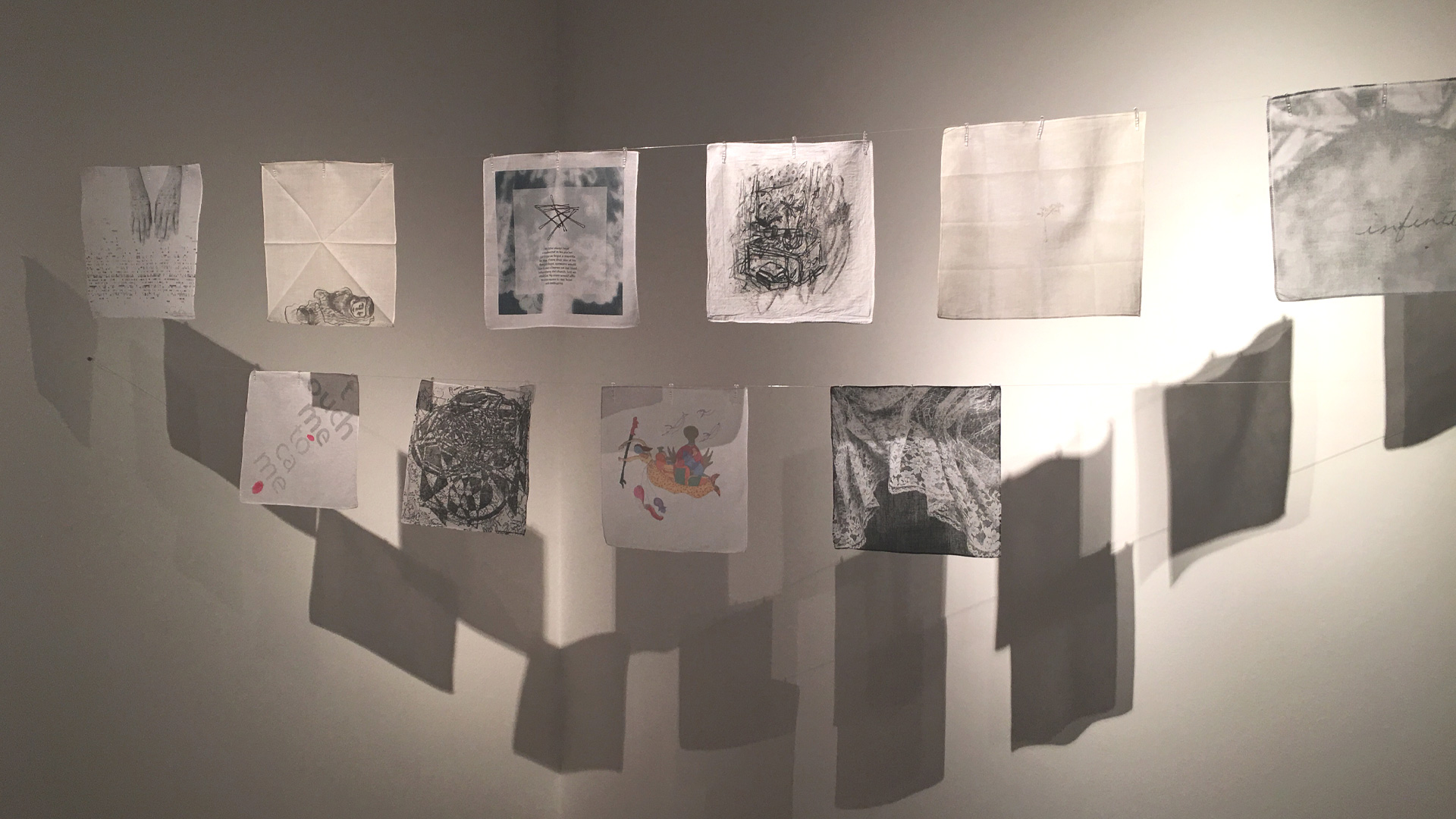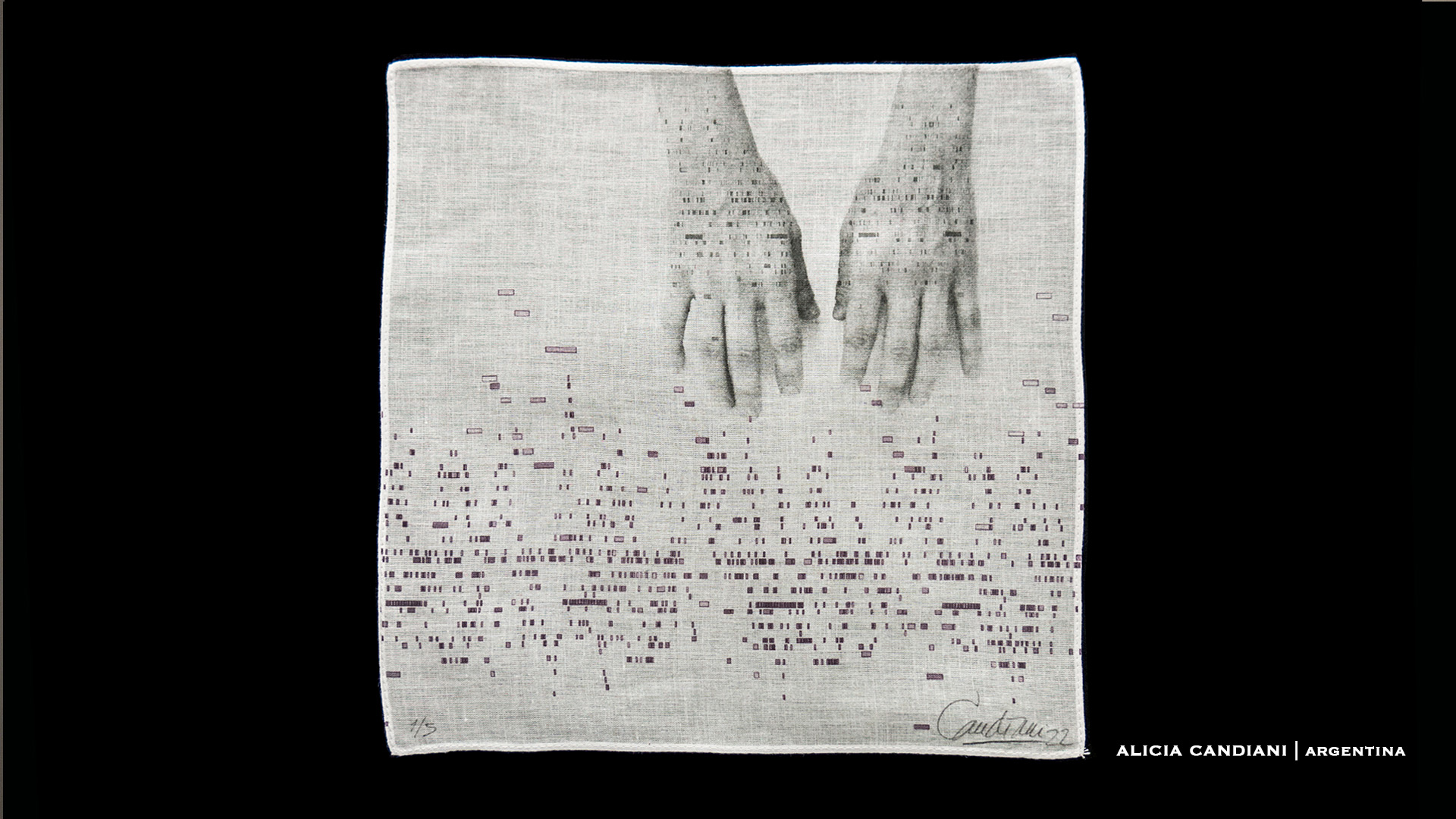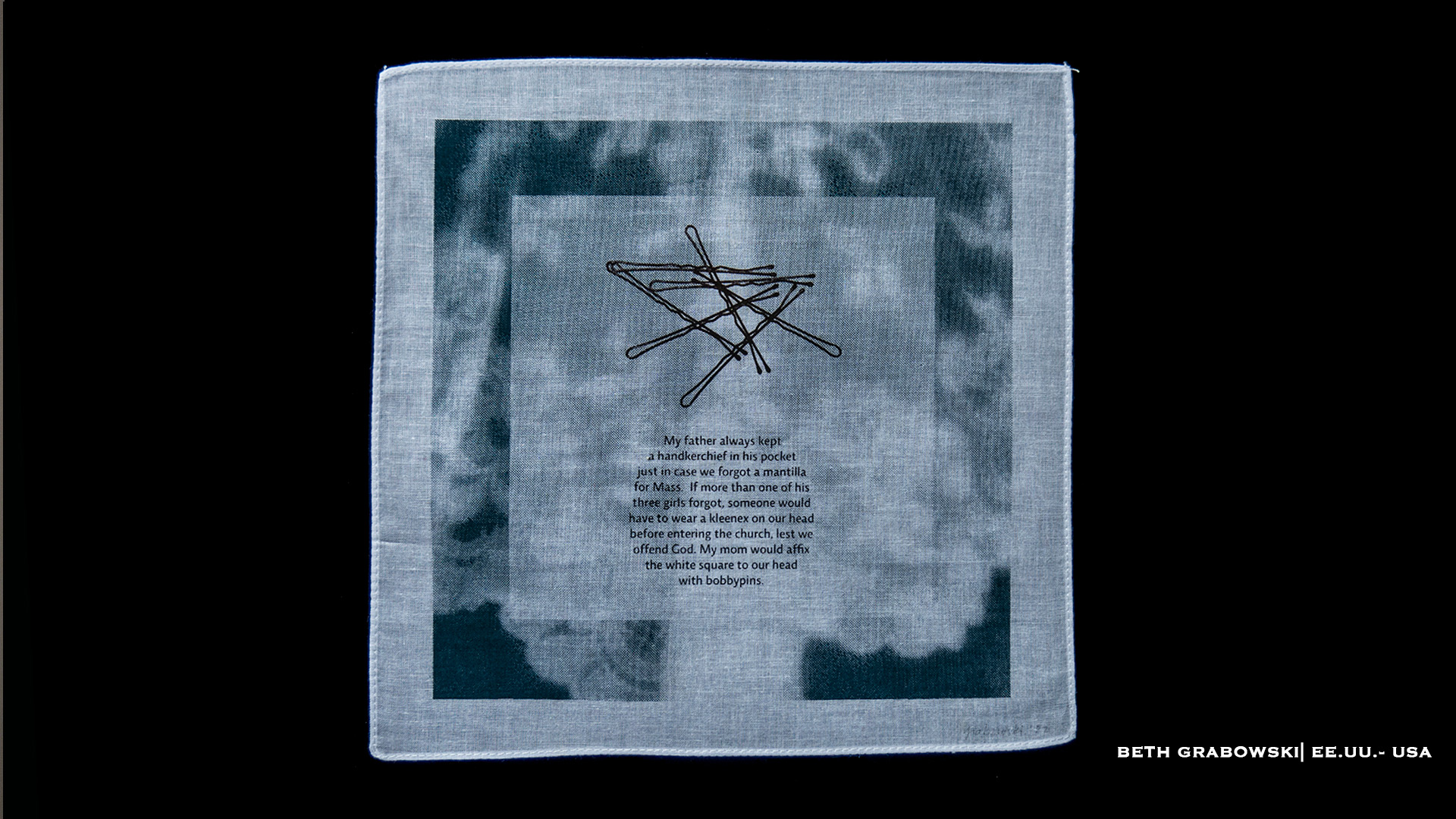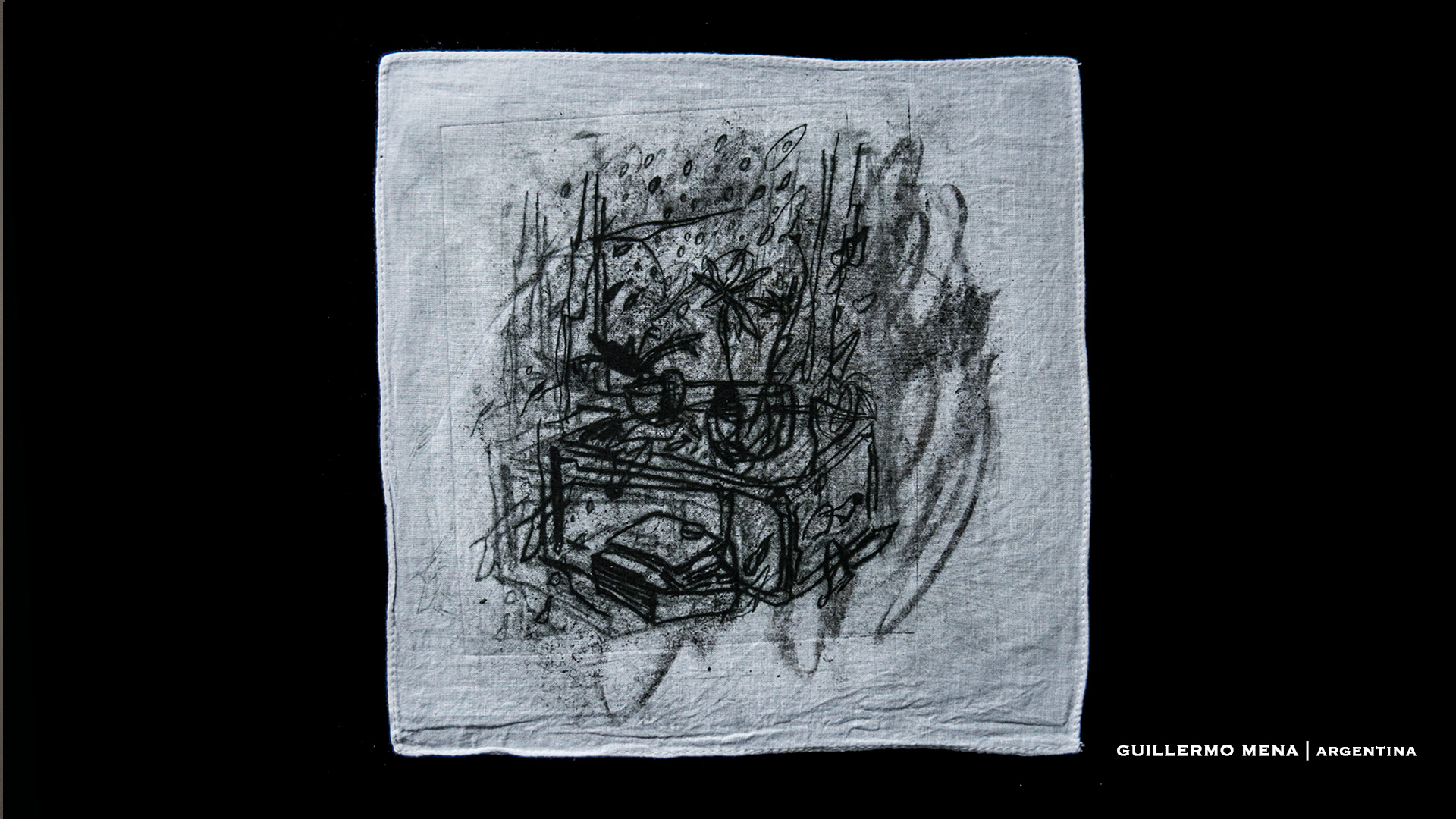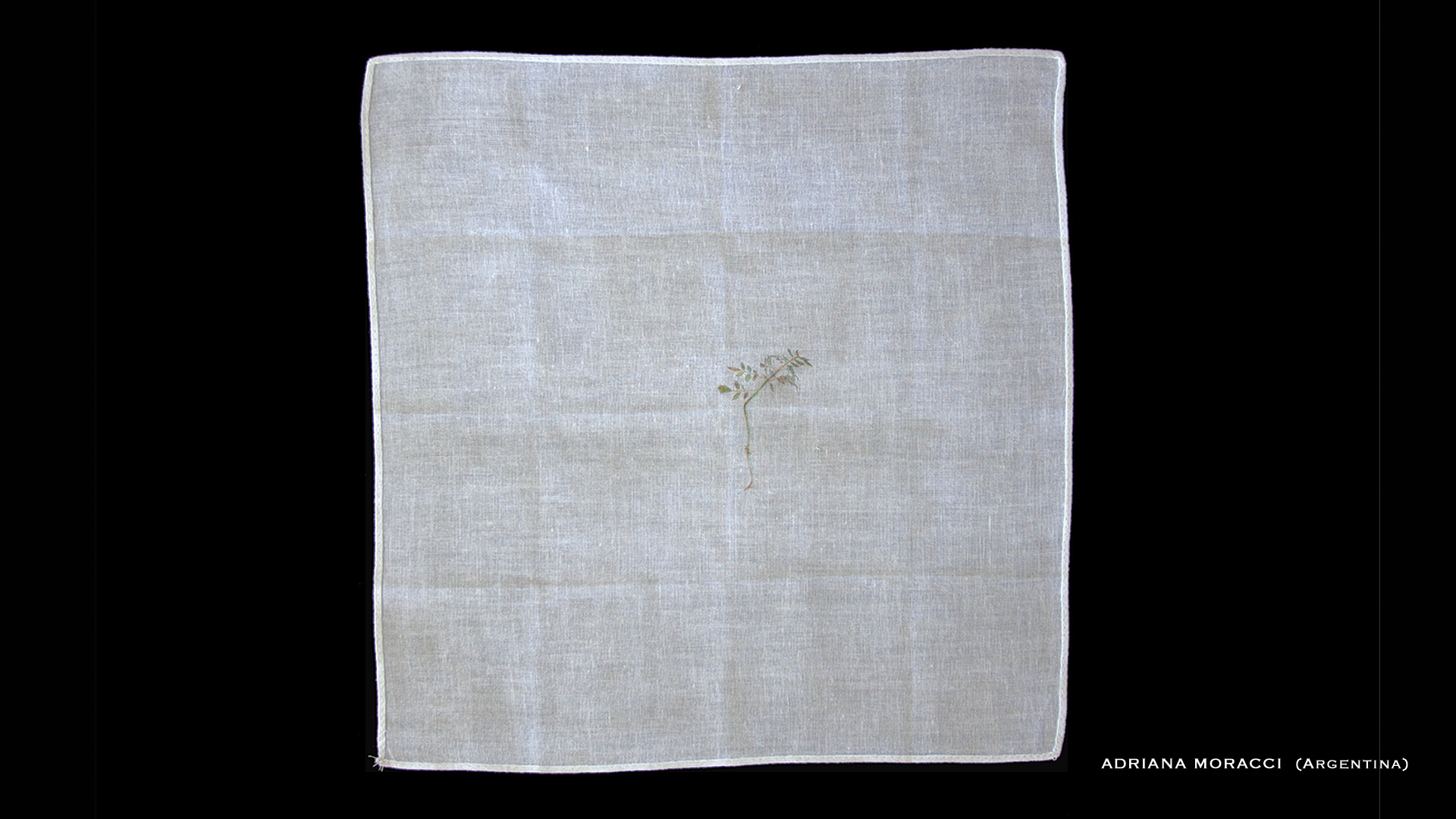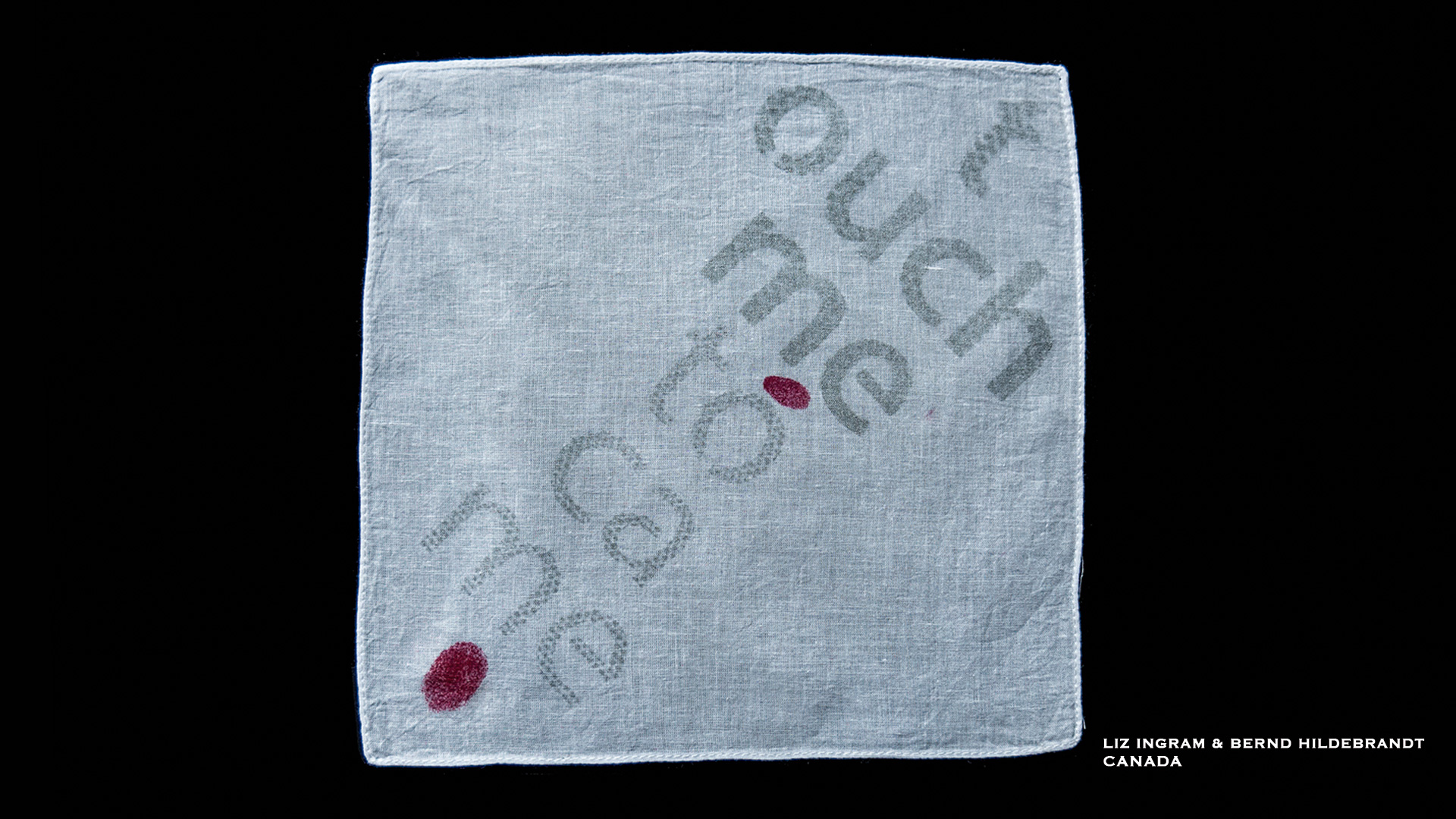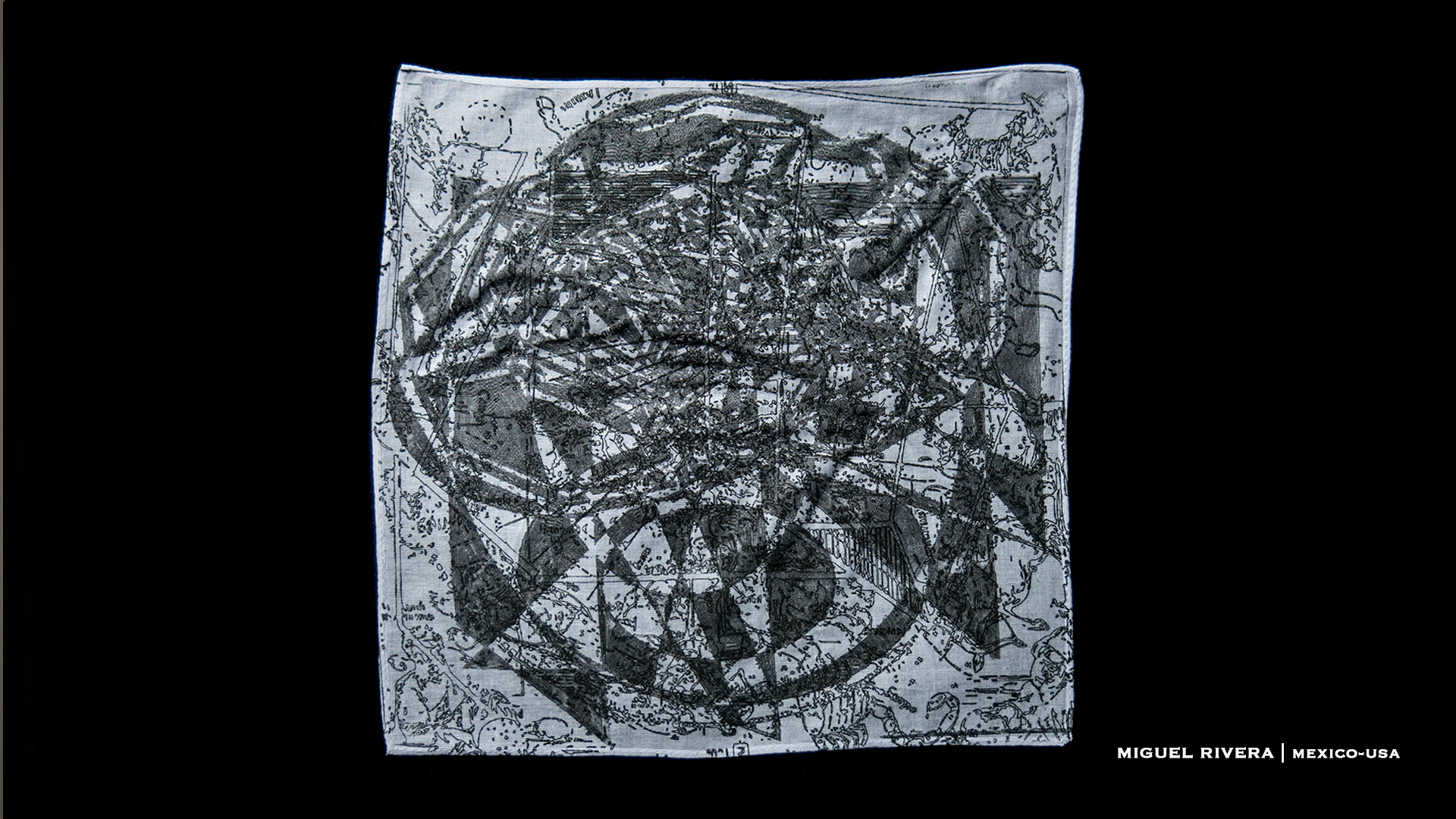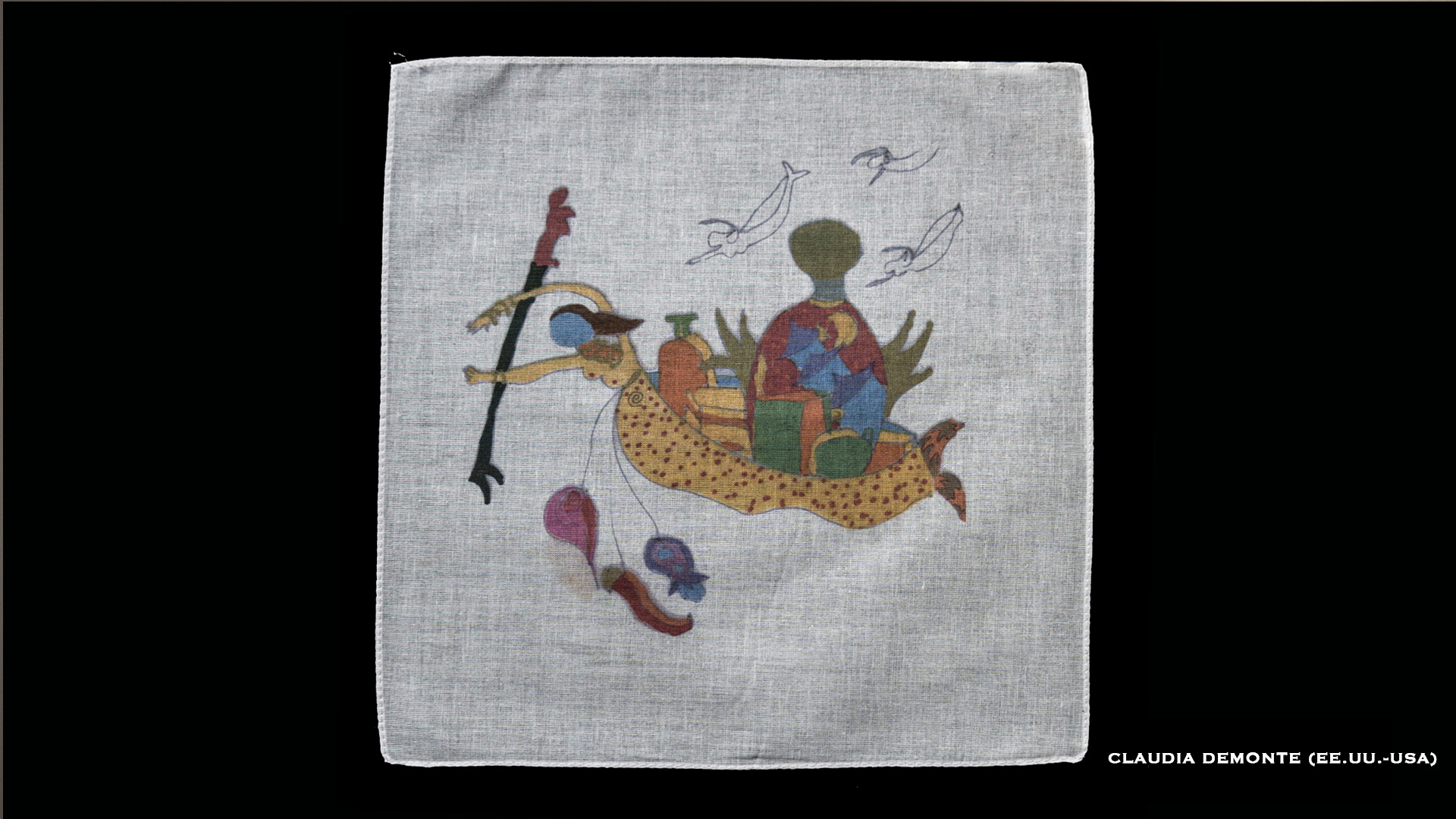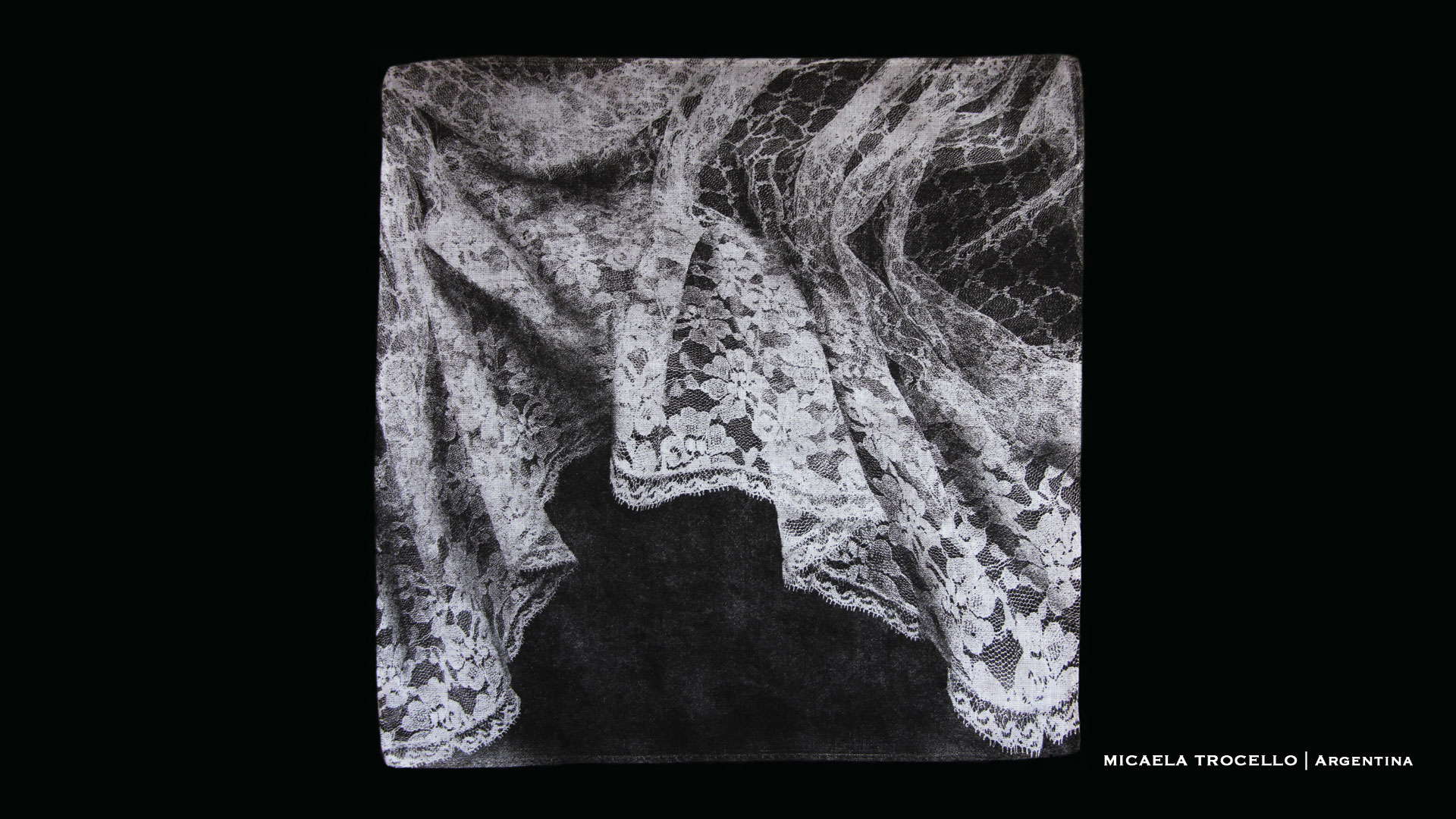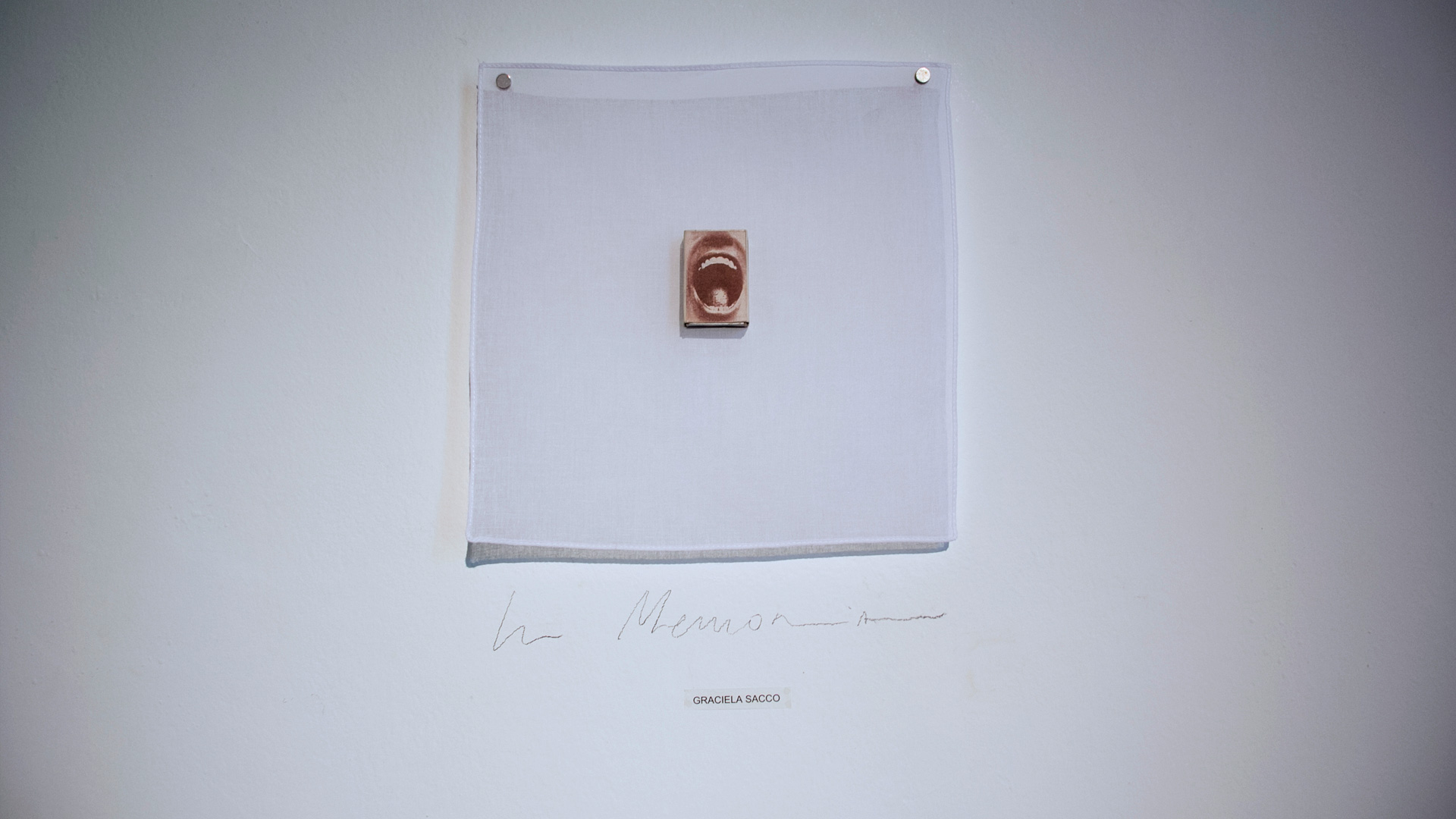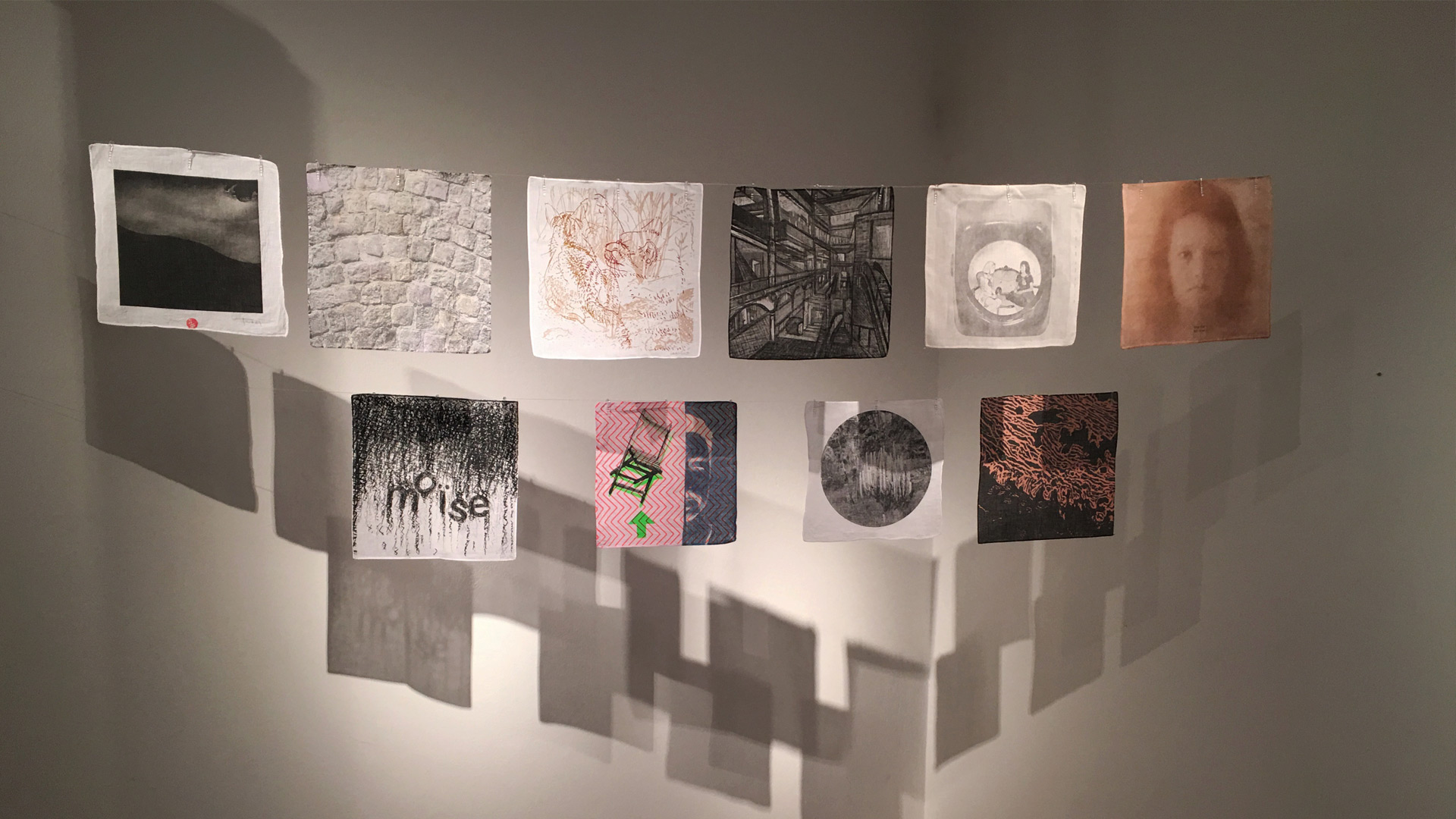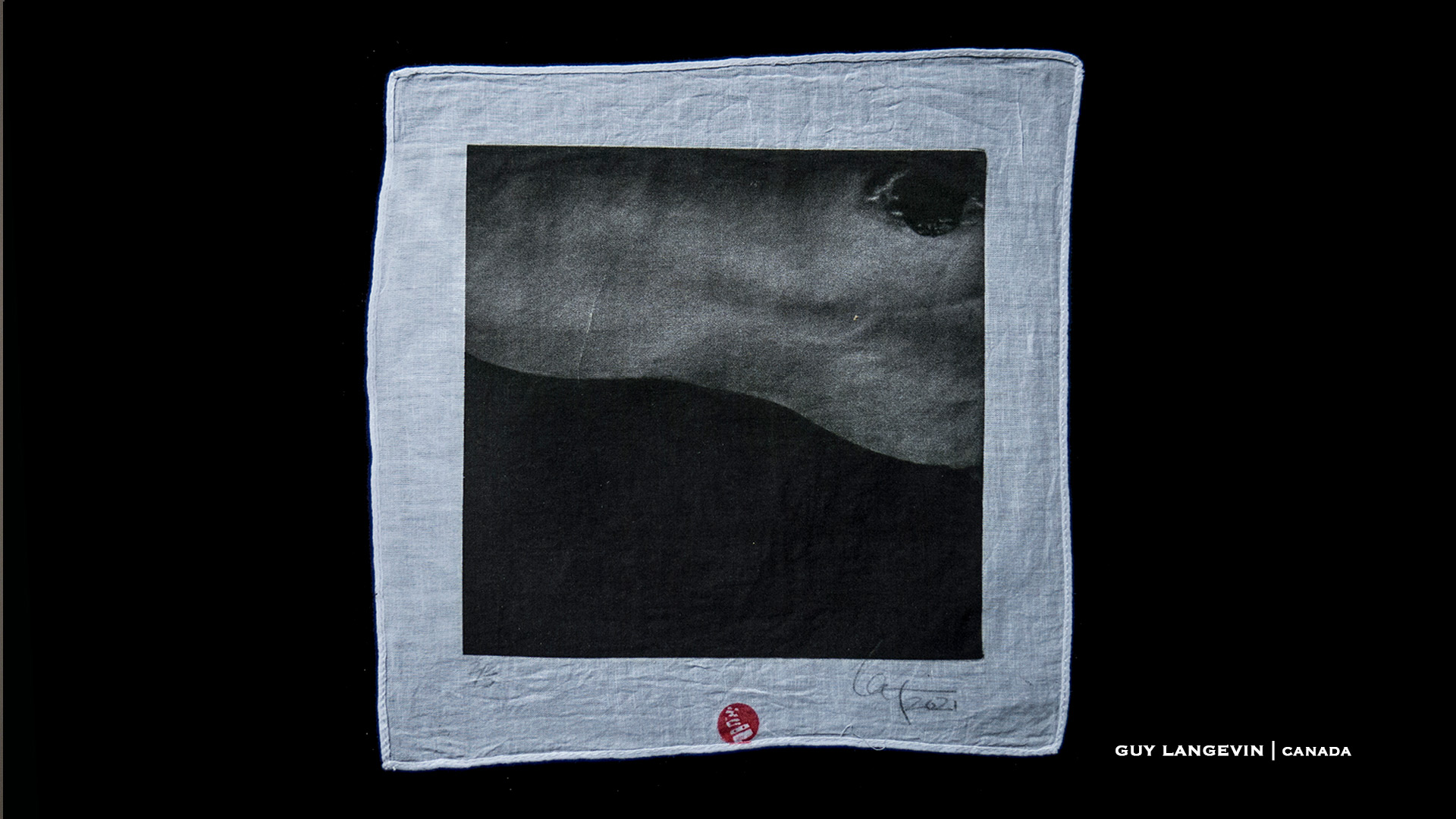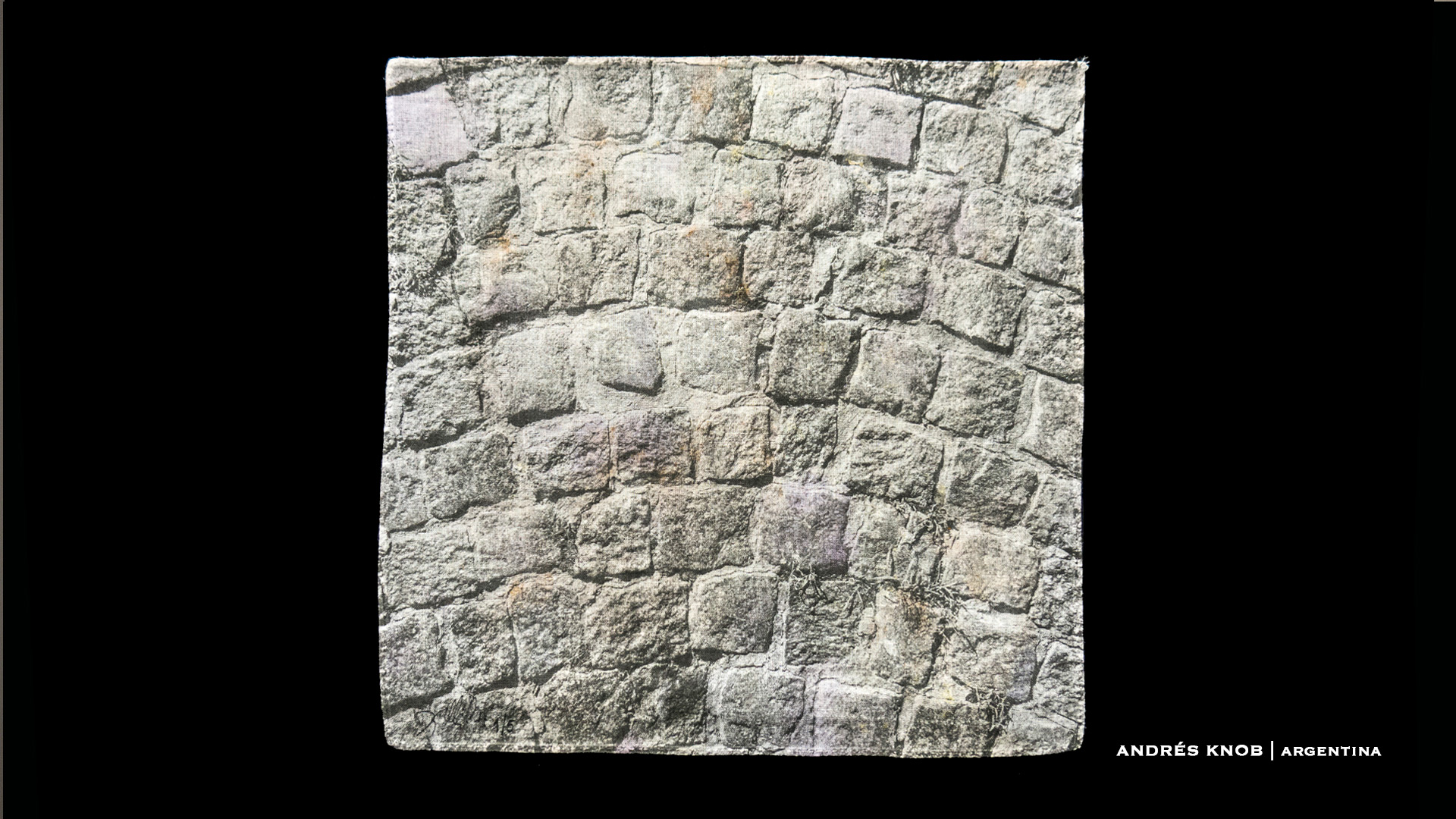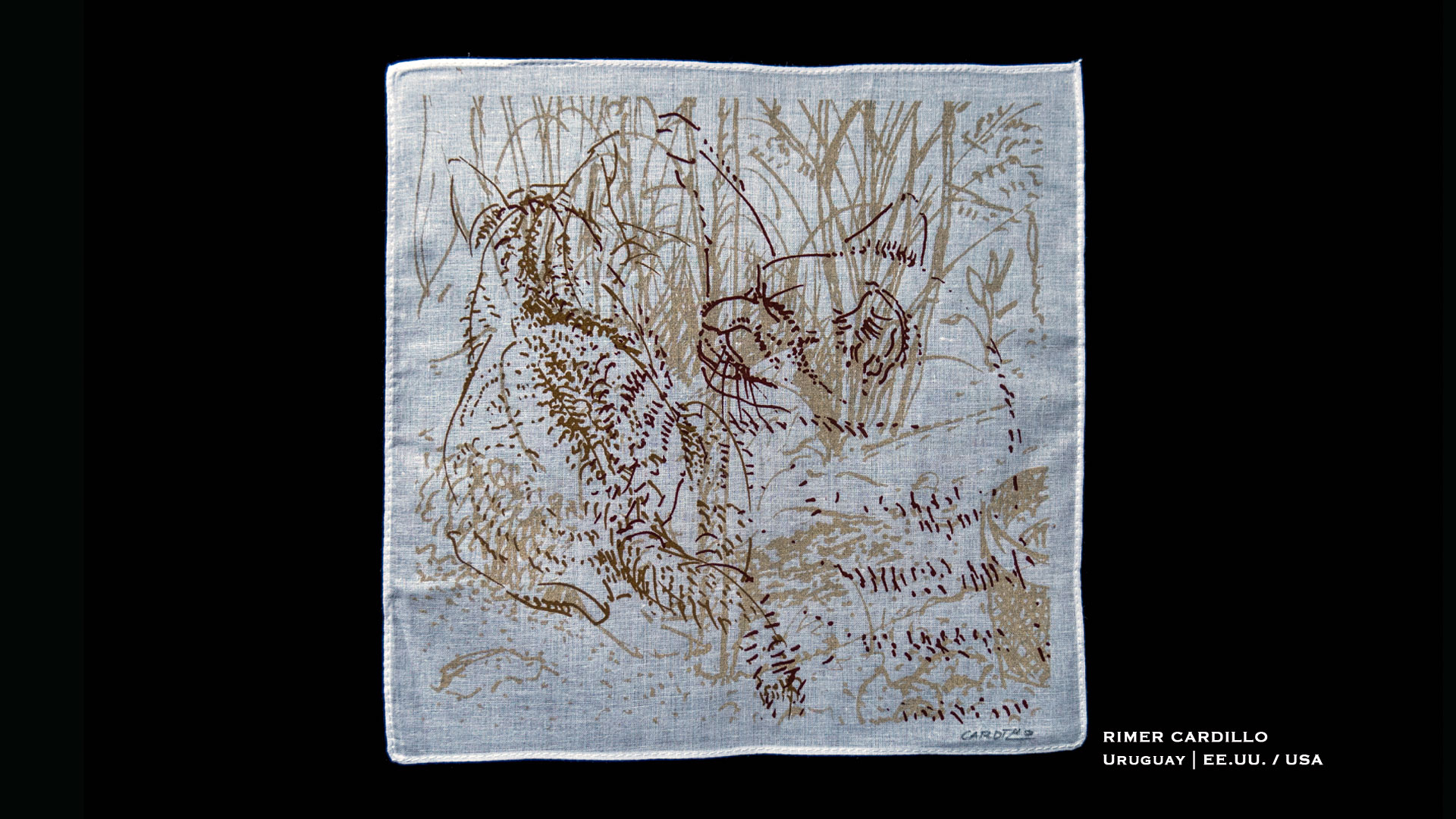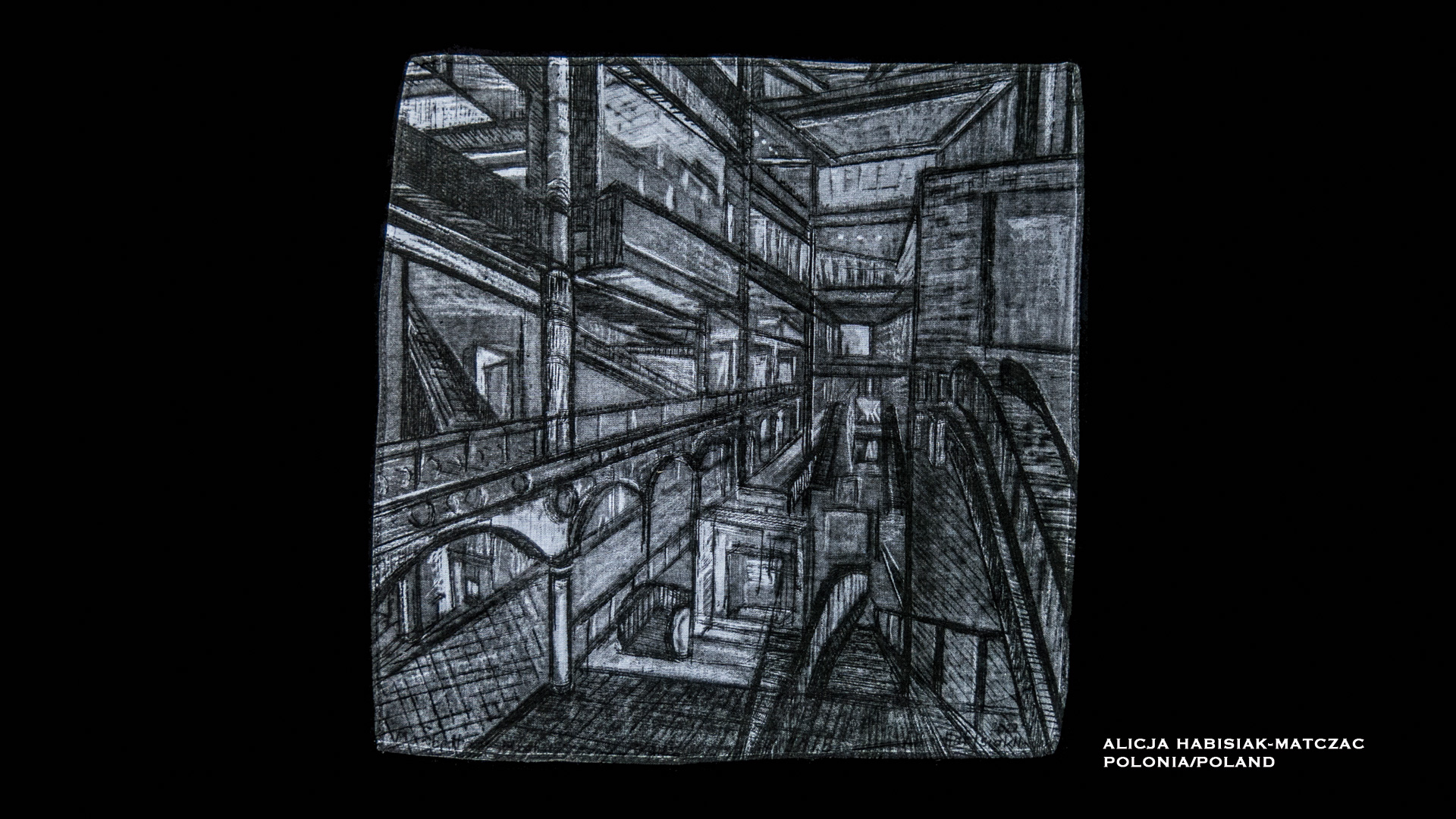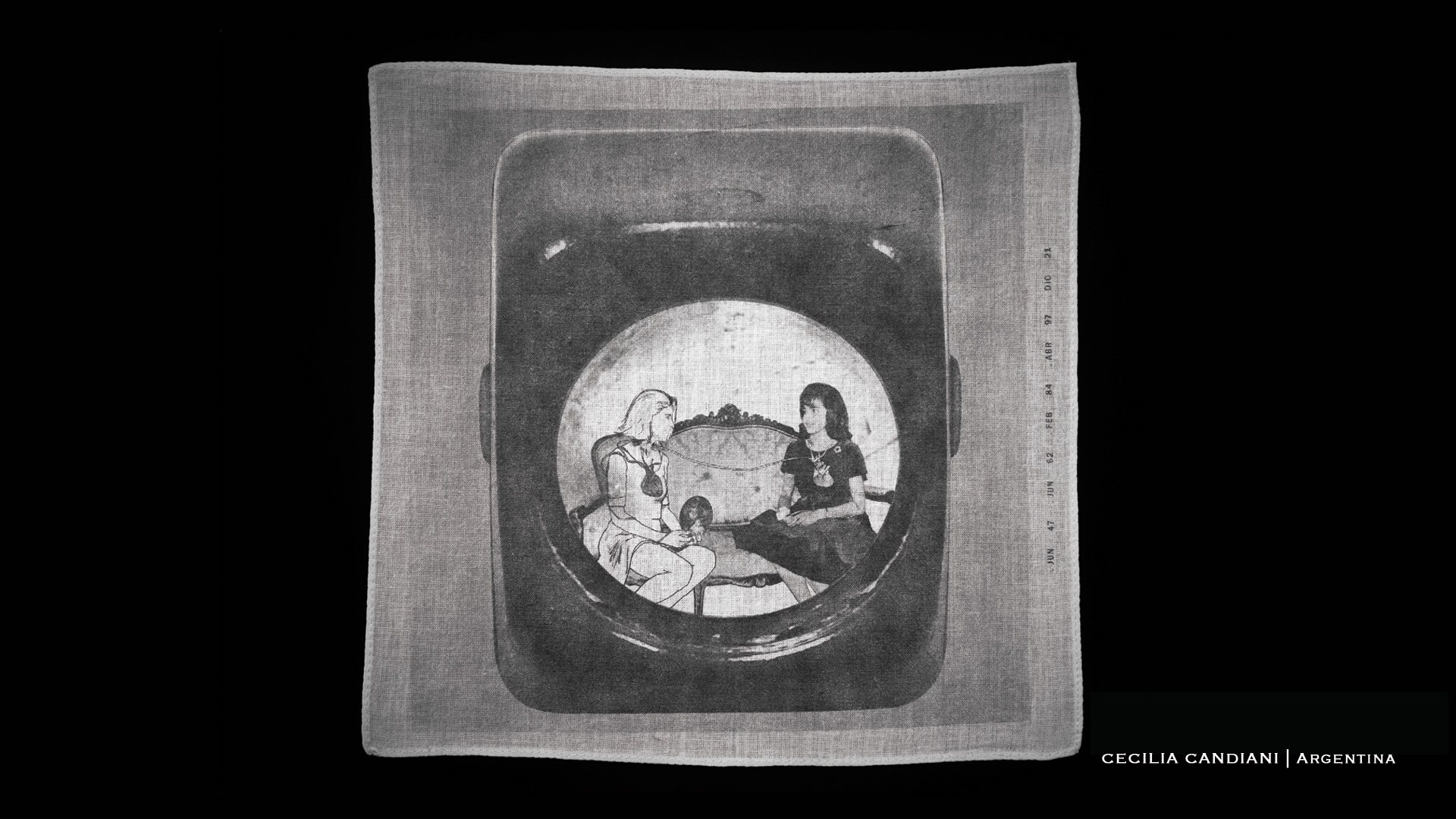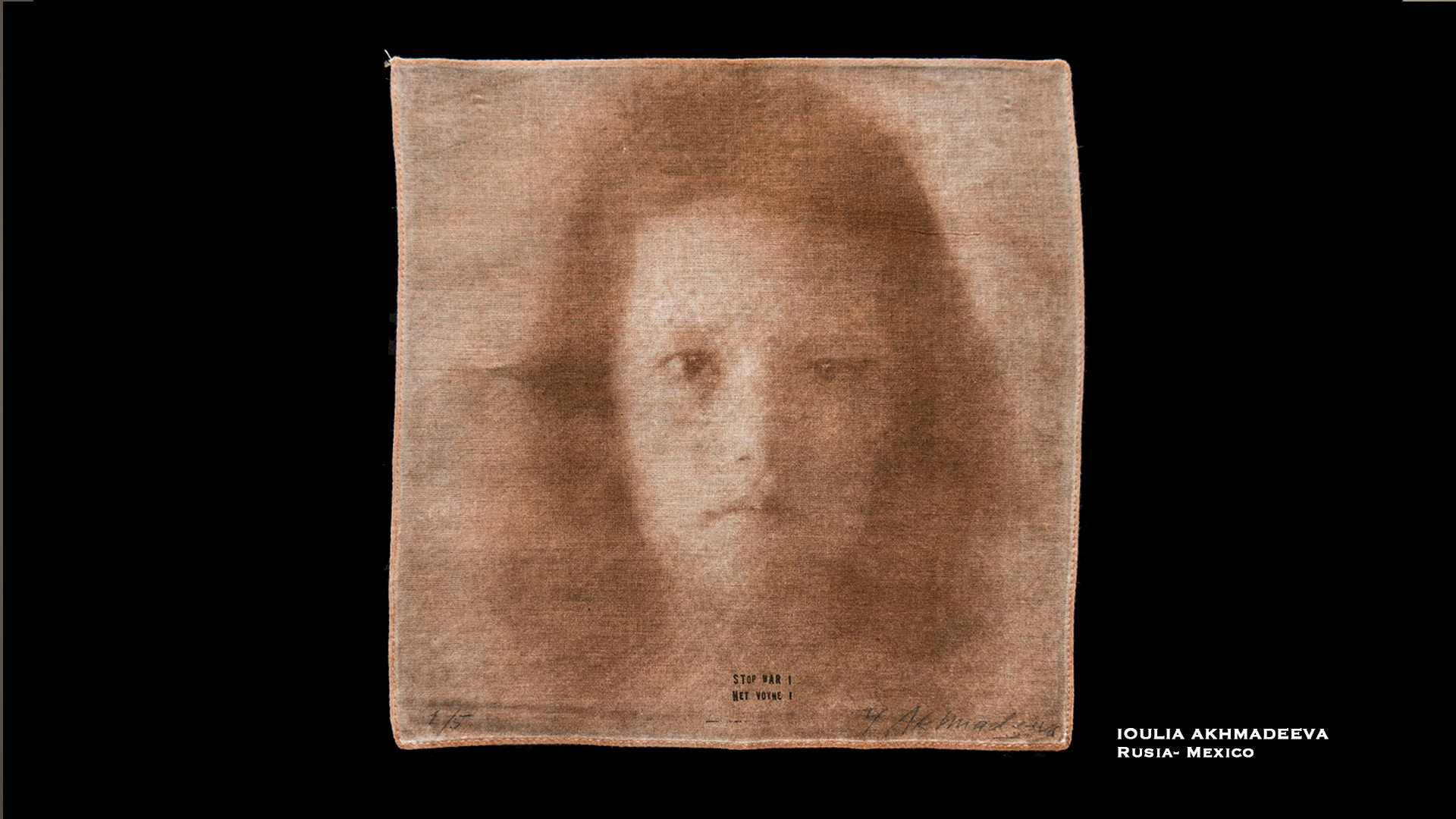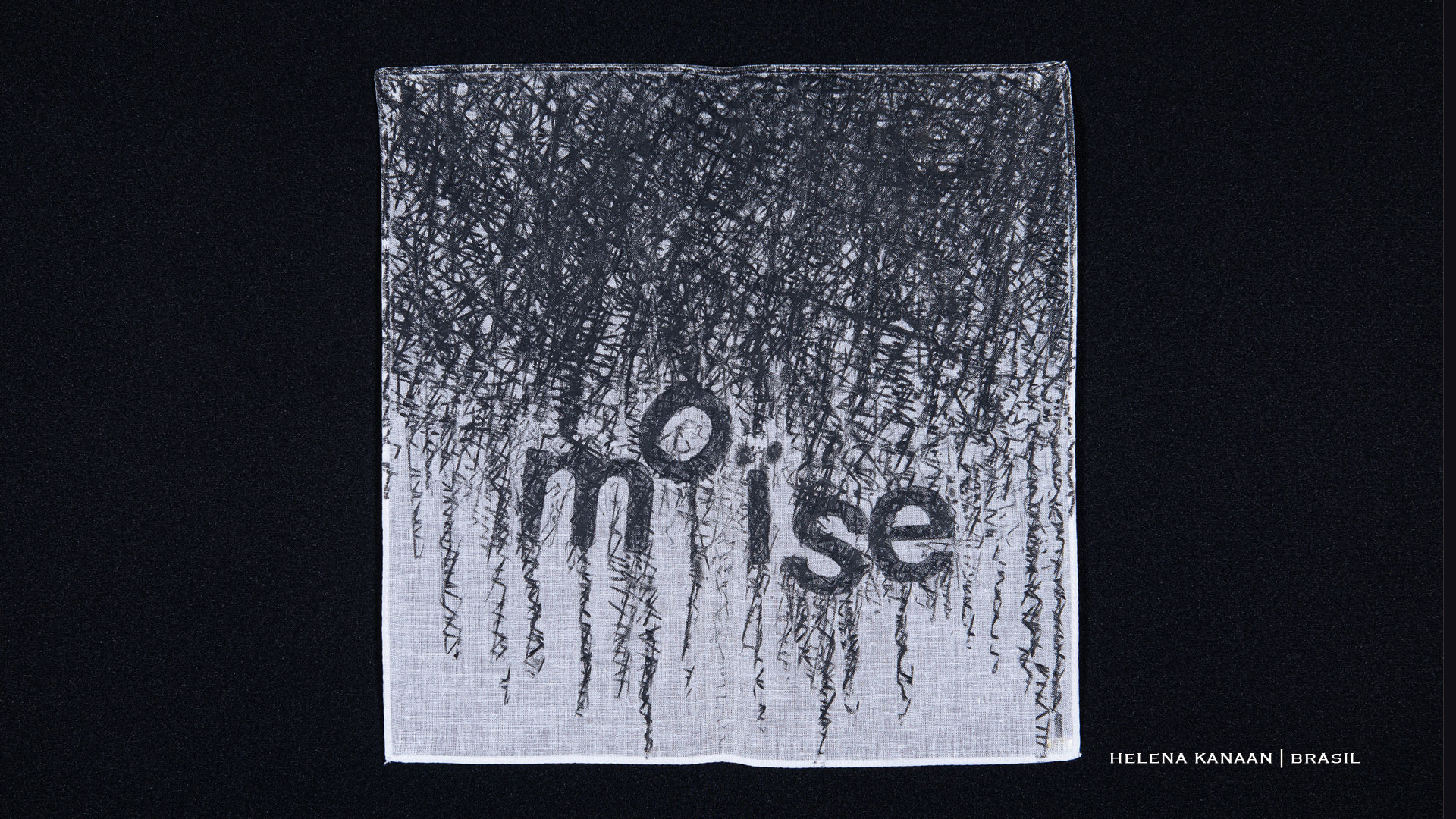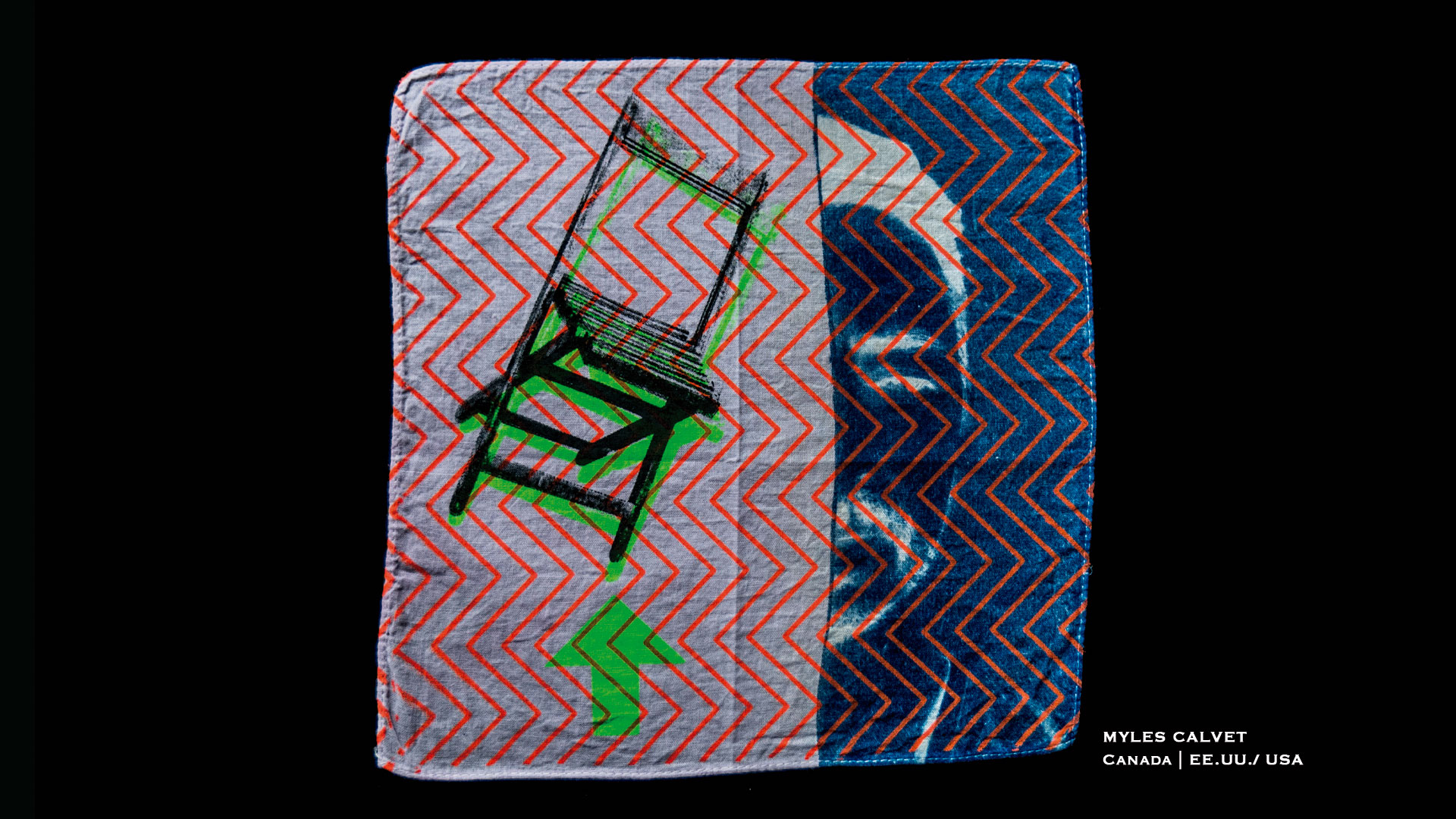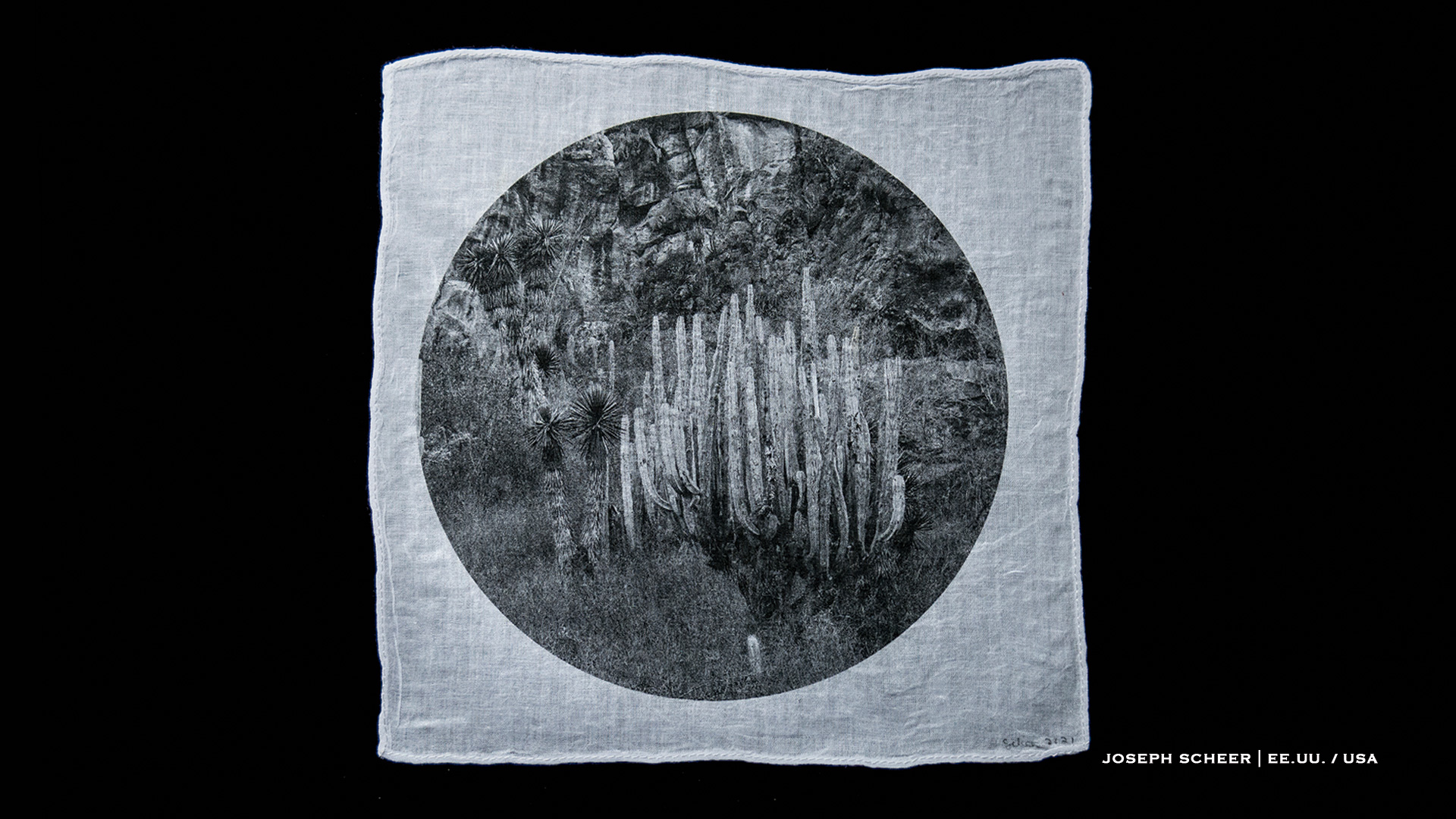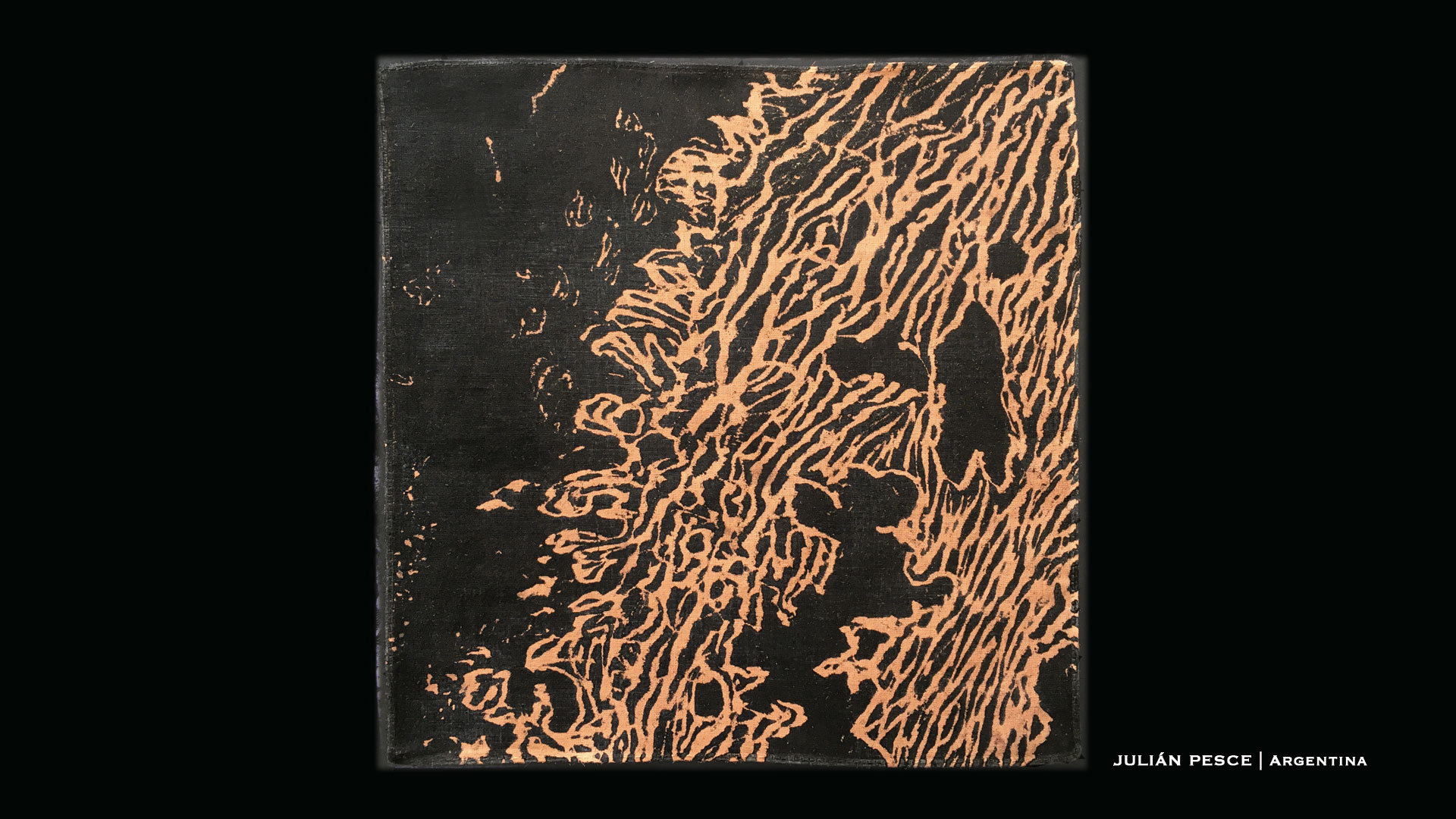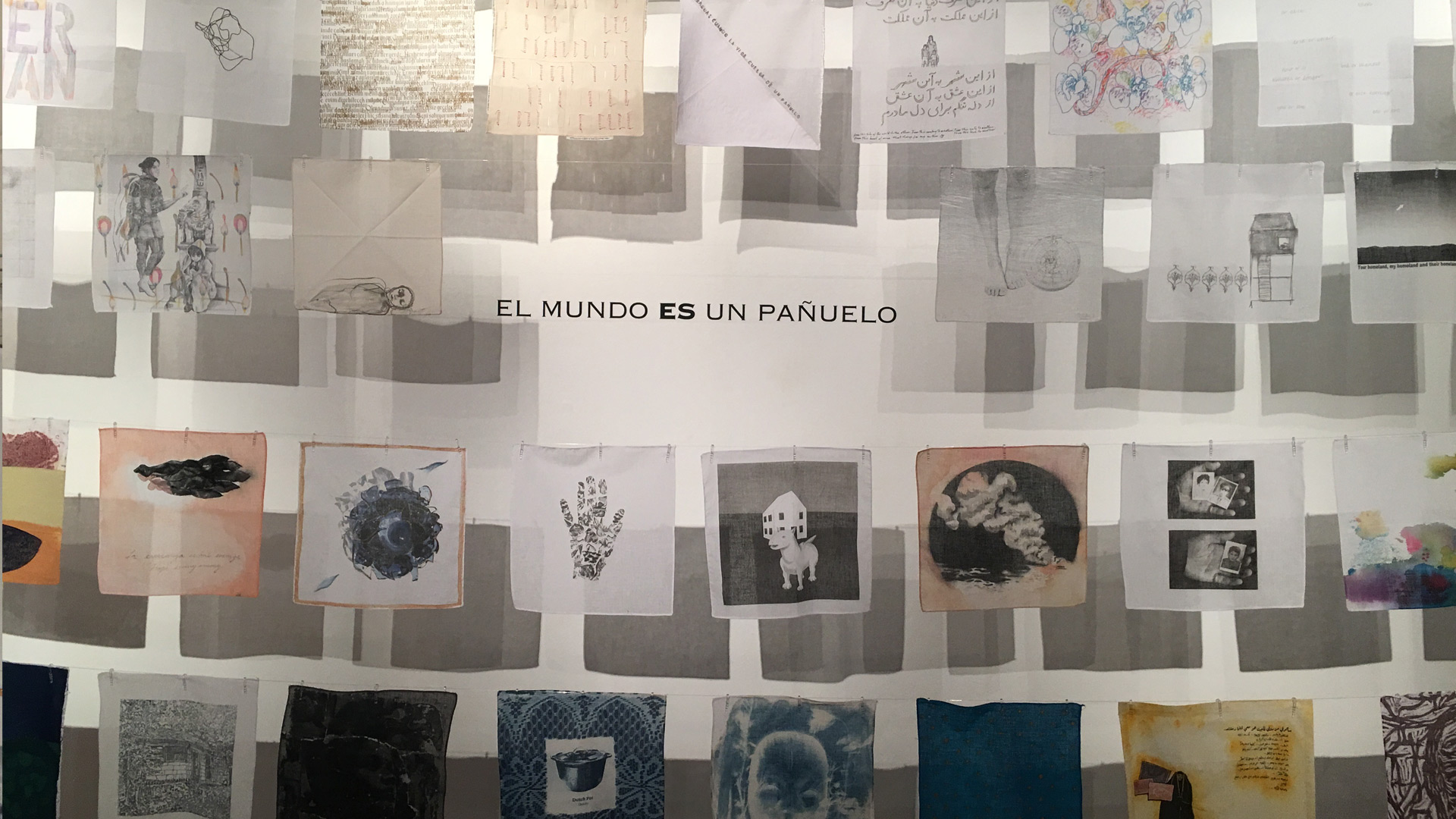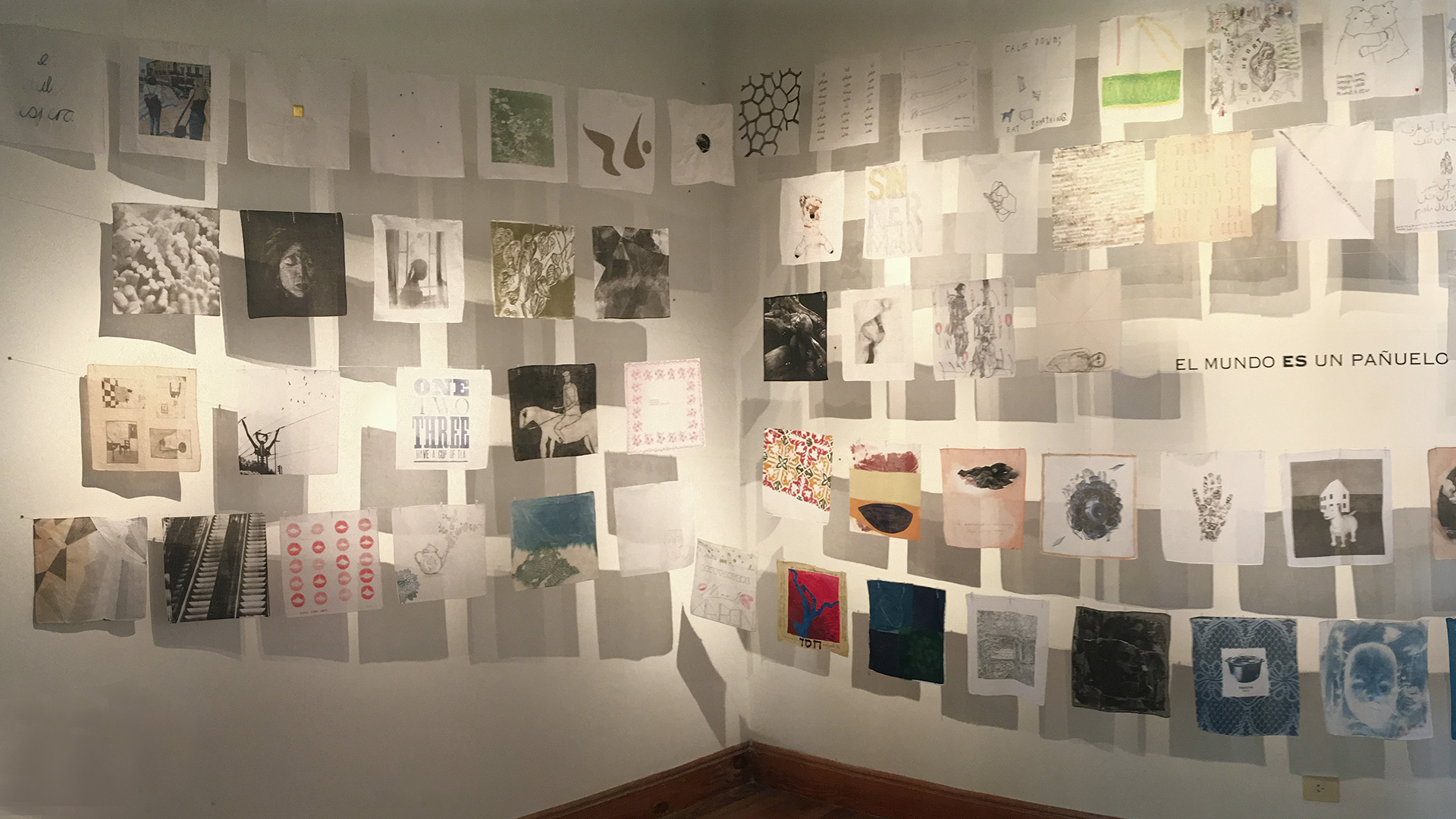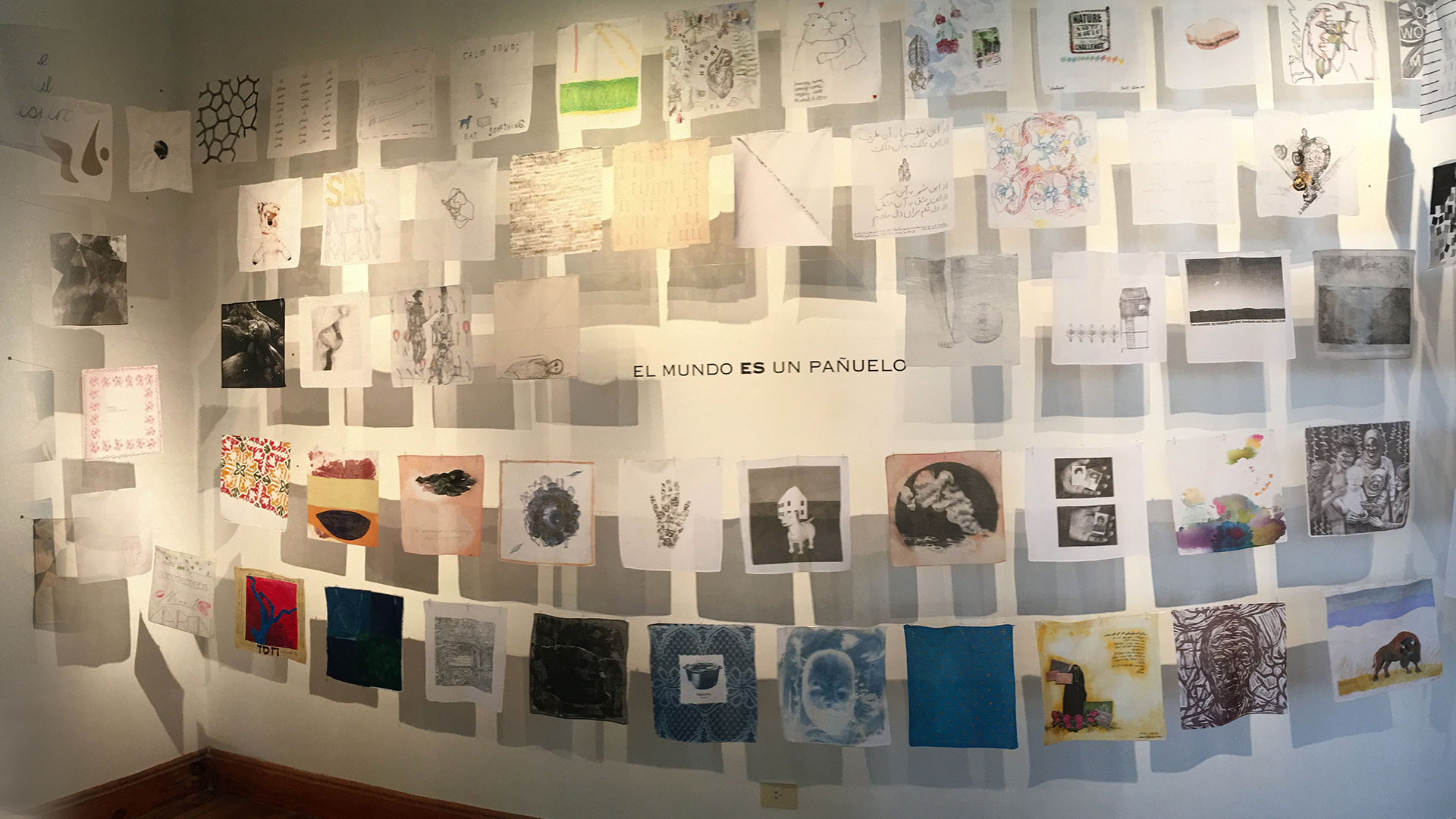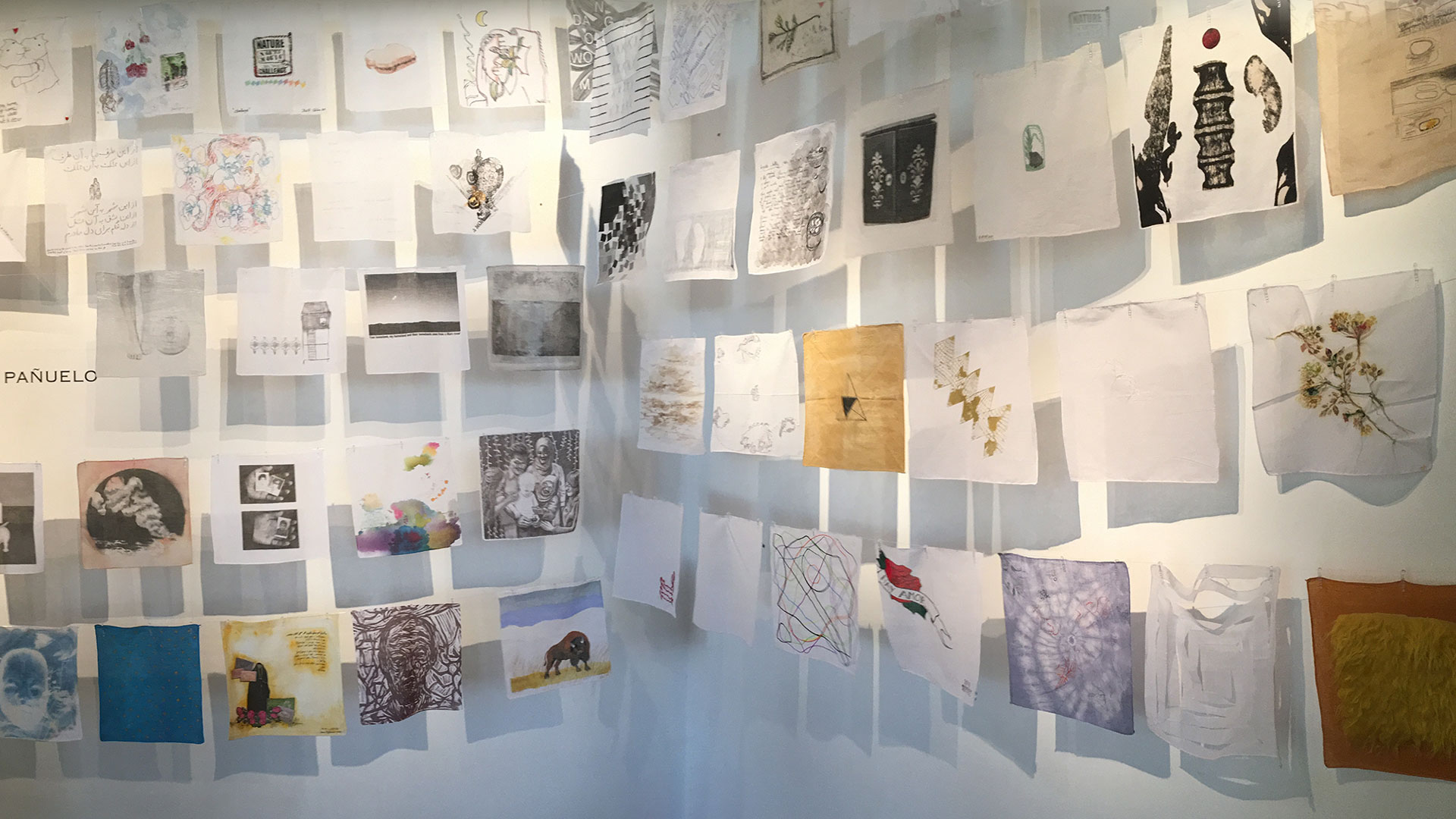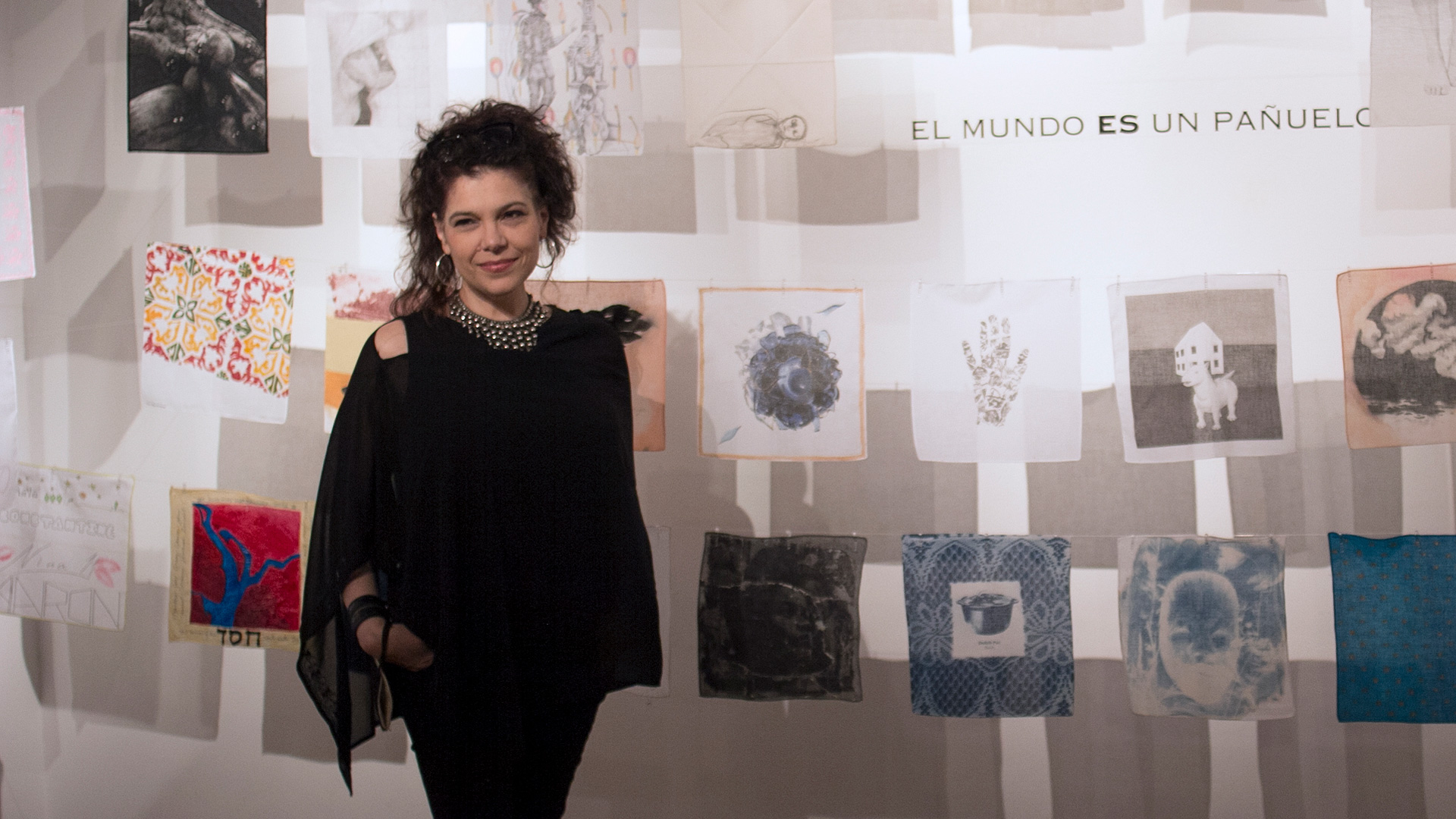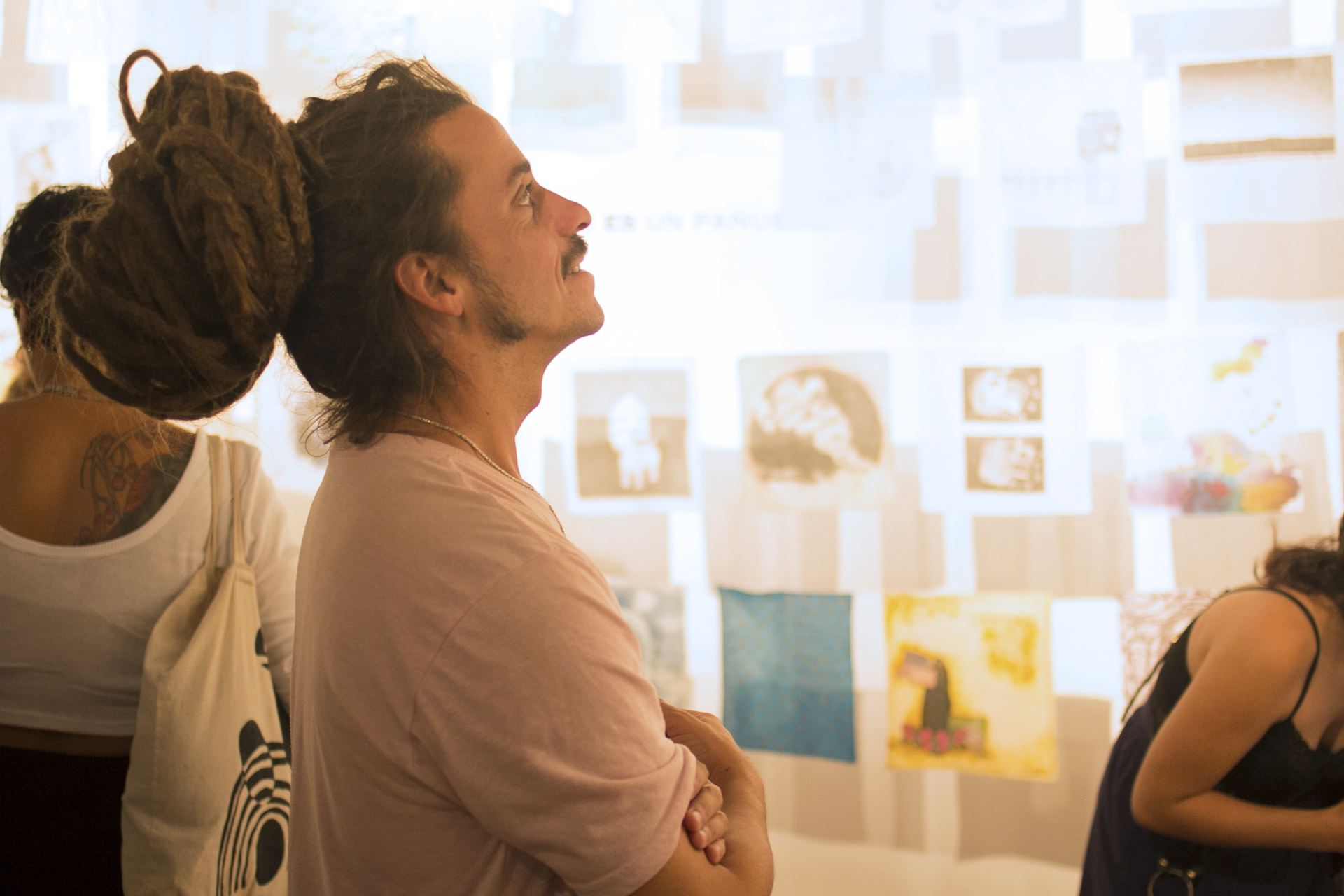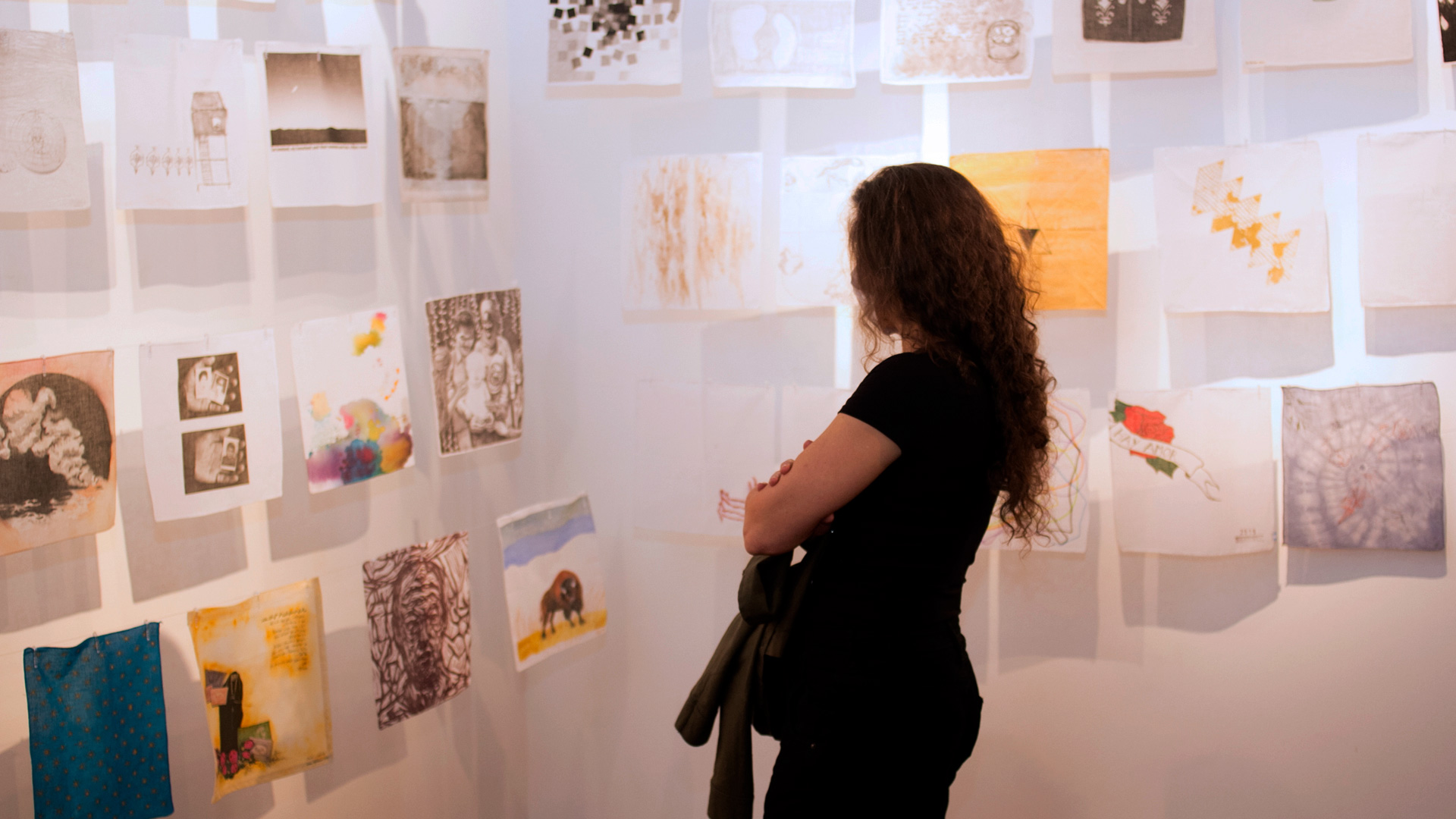Artists
United States of America
Beth Grabowski
#Future
02.06.21 30.06.21
Beth Grabowski is an artist, author and educator. A Professor of Art at the University of North Carolina at Chapel Hill, she has taught all manner of printmaking and book arts. Beth Grabowski’s art explores aspects of identity and relationship experienced from the perspective of motherhood. Issues such as nurturance, sentimentality, expectation, domestic labour, familial hierarchy and family narrative motivate her work. The work frequently exists as a documentation of the process of familial relationship through collaborative works. Grabowski is a past president of SGC International, a professional organization for print, paper, and book artists, educators, collectors, and enthusiasts. Grabowski is co-author, with Bill Fick (Supergraphic/Duke University), of Printmaking, a Complete Guide to Materials and Processes, (Laurence King, 2009, 2014). Her work has been represented widely in national and international venues, including the National Museum of Women in the Arts in Washington DC, the North Carolina Museum of Art, Art Helix in Brooklyn, NY, Racine Art Museum, and the Câmara Municipal de Alijo, Portugal.
ARTIST´S STATEMENT
The late Svetlana Boym in her book The Future of Nostalgia, defined the nostalgic impulse as “not always retrospective; (but)… prospective as well. … (N)ostalgia is about the relationship between individual biography and the biography of groups or nations, between personal and collective memory.”* I embrace Boym’s idea that a “Contemporary Nostalgia” represents a longing for coherency borne more from an apprehension of an uncertain future rather than a sentimental desire for a past. It is a phenomenon particular to contemporary life and reflects a sense of foreboding that puts our capacity for self-determination at risk.
Much of my work for the past several years has acknowledged this fear for the future that has marked this millennium. Structural inequalities that continue to impact the most vulnerable exist in every facet of our lives from political policy to climate change. Conversely, nostalgia holds out hope for a return—or at least reclamation of agency—perhaps as we can only understand in hindsight. As long as the possibility of empathetic experience exists —however remote— then the understanding of our collective responsibility becomes tangible. In my work, I seek to suggest the intangibles, uncertainties, and consequences that arise from our individual and collective attempts to confront these problems that seem to define our contemporary experience.
* Svetlana Boym, Nostalgia and its Discontents, The Hedgehog Review / Summer 2007, p 8
ABOUT FUTURE
I was initially attracted to participate in t the Together Apart: #Future program mostly because the past pandemic year has been difficult and my creative life needed some revitalization. Because much of my work is informed by questions relating to the theme, it seemed a perfect opportunity to recharge my thinking and practice. I am so thankful to the ‘ace staff and of all the participants for their generosity and willingness to take some chances.
I found the exercises useful as a catalyst to expand some of my thinking and developing new frameworks for considering concepts of time, space, nostalgia, responsibility and complicity, the elusive nature of language and communication, and of image making. I particularly enjoyed working with Char and Clare in the small group exercise. Our rich discussions opened some new paths for my thinking and I made something that I might not have otherwise. This experience has renewed my appreciation for an artistic community and the need to cultivate dialog despite the obstacle of geography/distance (and my own tendency toward introversion!)
BIO
Beth Grabowski
1956 | Washington D.C.
Lives and works in Chapel Hill, North Carolina, USA
EDUCATION
1985 | MFA at the University of Wisconsin, Madison, USA
1978 | BA at the University of Virginia, Charlottesville, Virginia, USA
EXHIBITIONS
2021 | Branches From the Same Tree, Guanlan Printmaking Museum, Shenzen, China.
2021 | Routine Maintenance, University of North Florida, USA
2020| Intersecting Methods; Bringing Together the Arts and the Sciences, Stockton University Art Gallery, New Jersey, USA
2020| Celestial Terrestrial, El Arsenal de la Marina, San Juan, Puerto Rico.
2019 | A Book about Death; The Last Waltz, Islip Art Museum, East Islip, New York, USA
RESIDENCIES
2016 | Proyecto ‘Ace , Buenos Aires, Argentina.
2010 | Tom Blaess Atelier, Bern, Switzerland.
2010 | Frans Masereel Centrum, Kasterlee, Belgium.
2007 | Sanbao Ceramics Institute, Jingdezhen, China.
AWARDS
2018 | Kappa Kappa Gamma Distinguished Professor of Art.
2018 | Honorary Member of the Council, SGC International.
2016 | Provost’s Award for Creative Activity in the Fine Arts, UNC,Chapel Hill.
2008 | Academic Leadership Award, Institute for the ARts and Humanities, UNC-Chapel Hill.
2000 | Artist’s Fellowship Award, North Carolina Arts Council.
OTHERS
2011 | UNC Center for Global Initiatives, CGI Distinguished Service Award for work on Visualizing Human Rights (Conferences in 2008, 2009, 2011).
Related Activities
International Projects, Exhibitions
The World IN a Handkerchief
´ace´s genealogy
23.03.22 06.05.22
For a month and a half, the Políglota Room is hosting three exhibitions on a rotating basis. From March 23 to April 1, “The world IS a handkerchief” and “The world IN a handkerchief: the genealogy of ´ace” were exhibited simultaneously, paying special tribute to the Argentine artist Graciela Sacco. While the original series returned to New York from where it will soon travel to England, the ‘ace genealogy collection was joined by a new exhibition of large format pieces of the participating artists, some belonging to the Fundación’ace collection and others to the private collection of Alicia Candiani.
The World IS a Handkerchief : El mundo es un pañuelo
A Wandering Genealogy curated by Claudia DeMonte & Cecilia Mandrile
The World IN a Handkerchief : El mundo en un pañuelo
Guest Curator, genealogy Proyecto’ace: Alicia Candiani
The World IS a Handkerchief is a travelling exhibition rooted in the Spanish saying ‘el mundo es un pañuelo,’ which translates into English as ‘this is such a small world’. The project traces serendipitous encounters, moments of discovering personal connections in distant places or unexpected contexts. The project began with the meeting of Claudia DeMonte and Cecilia Mandrile as a mentor and student respectively at the University of Maryland, United States in 1995 and has expanded through an international collaborative network between mentors, students and
peers.
The World IN a Handkerchief is a new chapter of the project, a graphic, soft and traveling portfolio curated by guests artists from the core genealogy. Artist and curator Alicia Candiani, essential mentor of this genealogy, Founder and Director of Proyecto´ace, has been invited to curate this new collection that reflects her close creative family.
ABOUT THE WORLD IN A HANDKERCHIEF by Cecilia Mandrile
Handkerchiefs have accompanied people in celebrations and farewells in many cultures for centuries, offered bodily protection and coverage, and sustained expressions of political tenets and spiritual beliefs. In this project, handkerchiefs become vessels of memories and itinerant narratives; containers of emotions; translators of wounds, signals of ideological resistance. Each piece epitomizes a soft space that holds disappearing recollections of homeland as well as reflections on displacement and identity that can be carried as a tangible memento. In times when touch appears as a dangerous sense, every single printed handkerchief means a meaningful testament of the continuous nurturing mentorship among artists and educators, reminding us that the soft touch remains both an intimate and universal need of communication.
To celebrate this constant and sustained creative dialogue, in 2019 the curators developed a portable exhibition of 50 handkerchiefs that explored the meaning of belonging and interconnectedness that this Spanish saying so tangibly evokes. In the reconstruction of this alternative family made up of artists and collectives from different latitudes and generations during the last two decades, both printed an edition of 25 handkerchiefs, and sent a printed handkerchief along with a blank handkerchief to 50 invited artists to intervene with their own reflections
on home, identity and belonging. From this exchange a “wandering genealogy” was born, a tribute to the strong threads that have woven this shared territory as itinerant artists and educators.
A limited edition catalogue including the work of 50 invited artists was published by Impact Press, Bristol, UK and includes an essay by Gill Saunders, Senior Curator of Prints, Victoria & Albert Museum, London. Currently, the catalogs of workshops and portfolios remain as digital publications, thus allowing to document the constant growth of this genealogy. Chris Knollmeyer, a sound artist in residence at ´ace at the same time, composed for this exhibition a special piece: “Sound of the Handkerchiefs”. The piece is a piano study made up of 25 melodies. Just as the handkerchiefs are tied to each artist’s history and sense of home, Chris feels a connection to the piano.
Related artists
Graciela Sacco
In Memoriam
Claudia DeMonte
Guest artist
Chris Knollmeyer
Composer of the piece “Sound of the Handkerchiefs” that accompanies the exhibition
OPENING
March 23, 7PM. Sala Políglota
FINISSAGE
April 27th, 1PM
The World is a Handkerchief |El mundo es un pañuelo
Exhibitions
2019 | London Print Studio Gallery, London, UK
2020 | Galería Blackburn 20|20, Elizabeth Foundation for the Arts,New York, USA
2021 | IMPACT11, Hong Kong, China
Catalogues | Instagram |Vimeo
